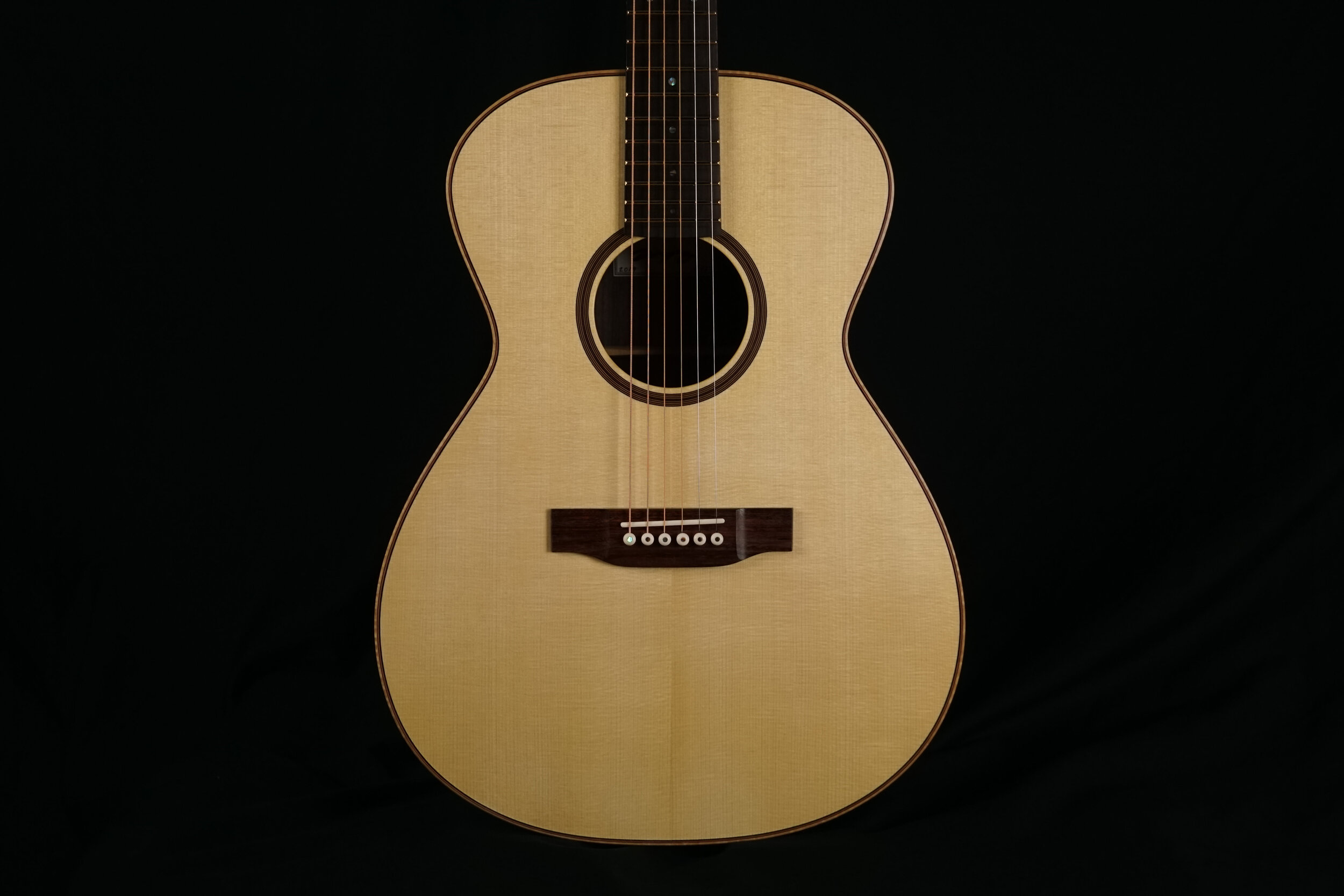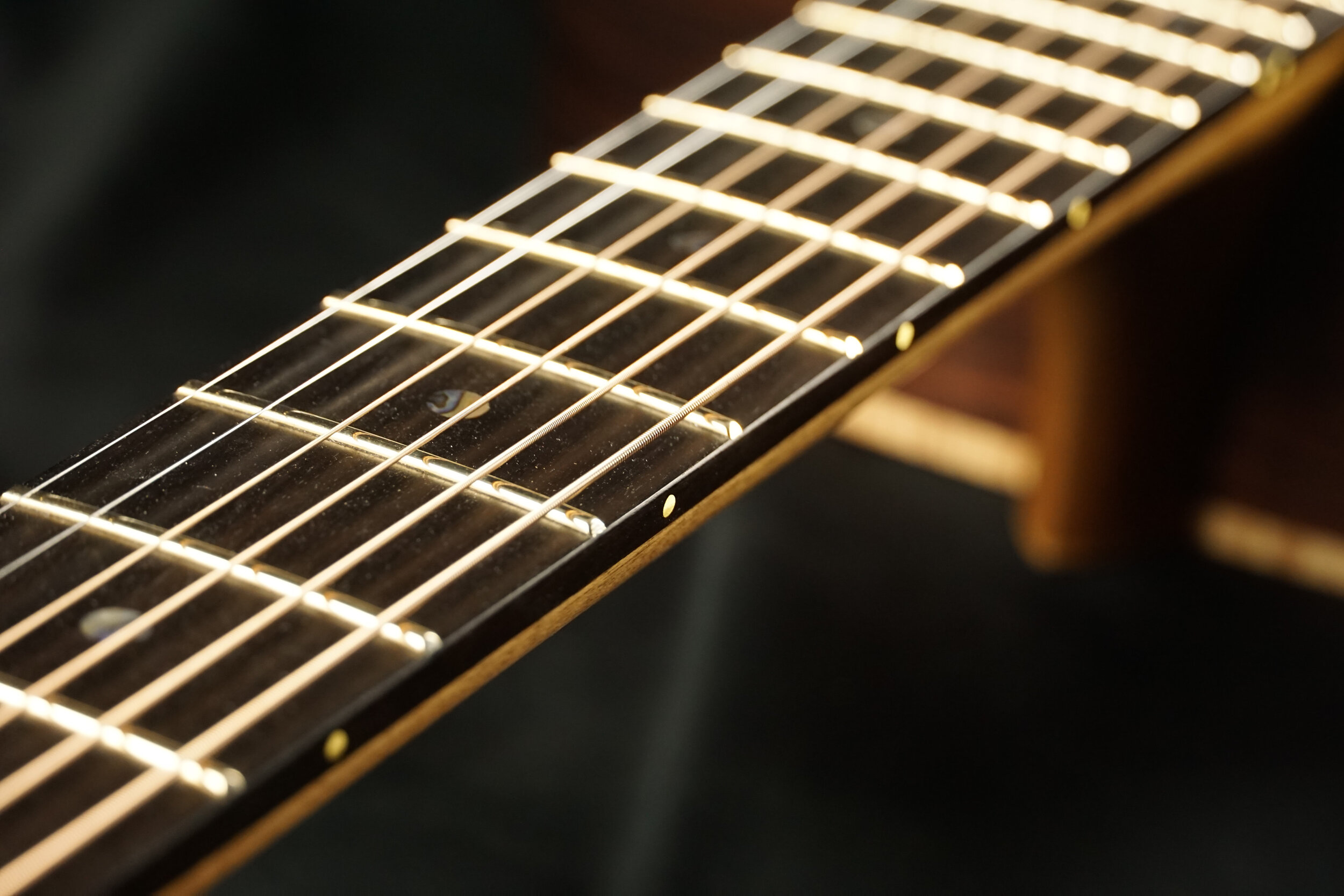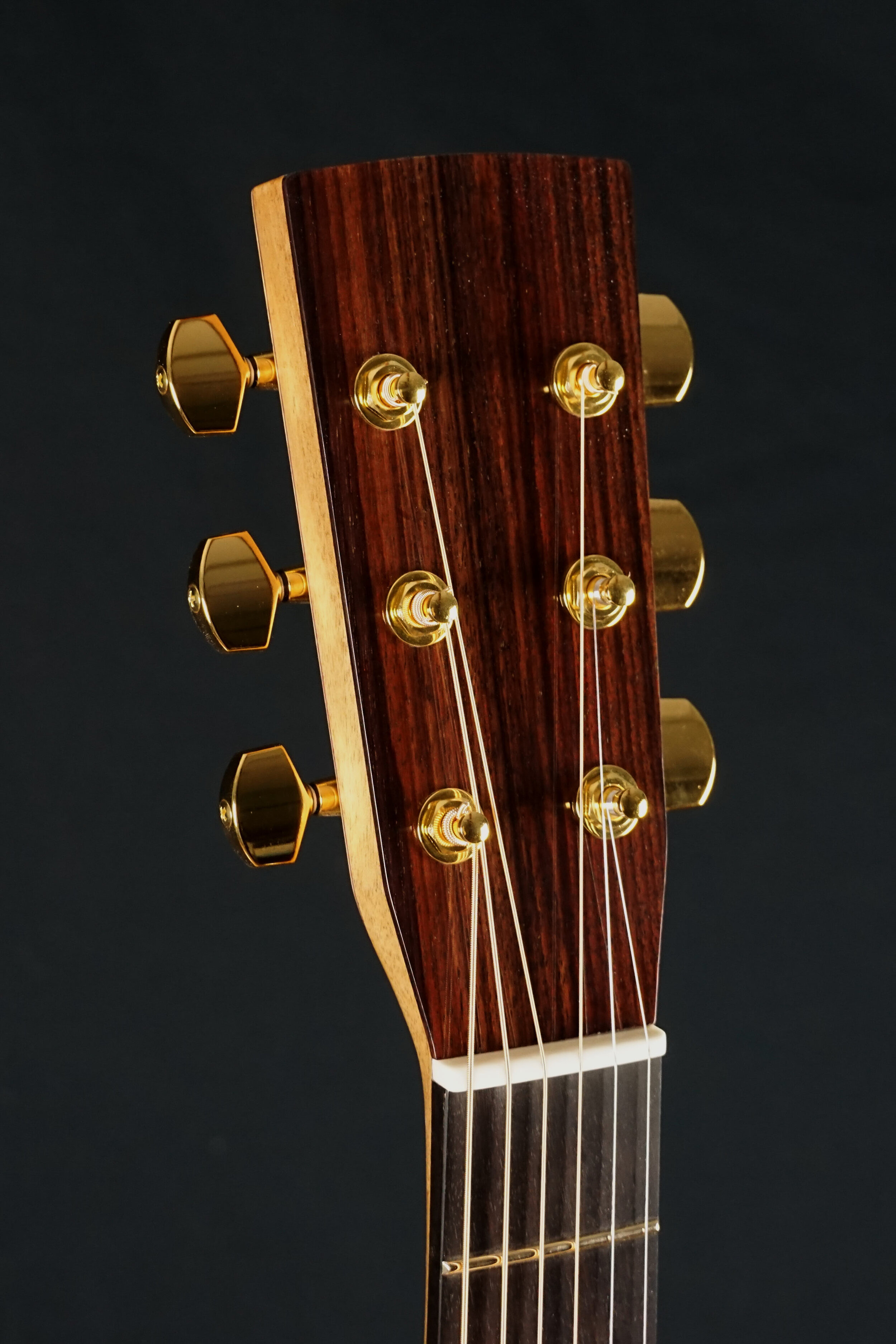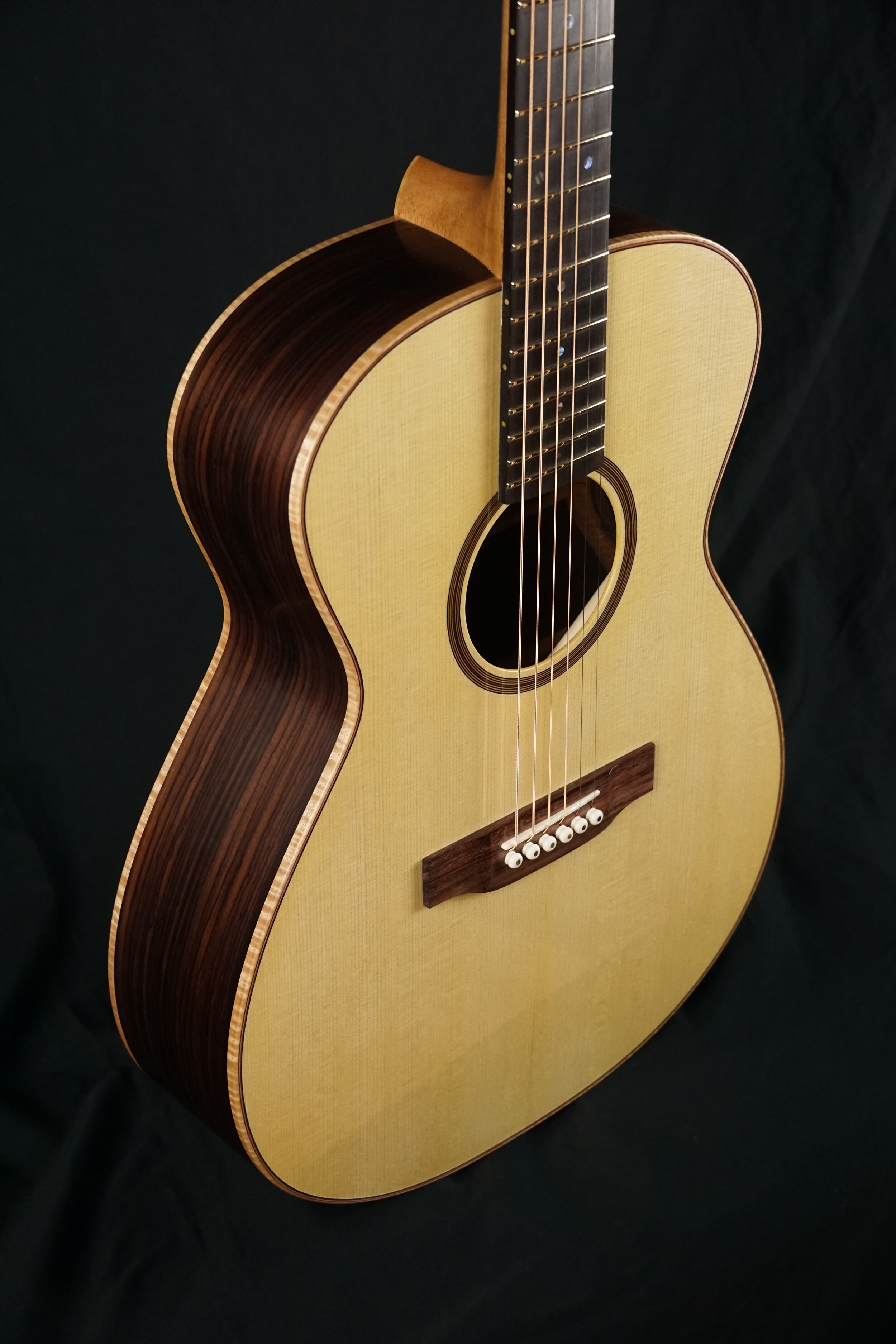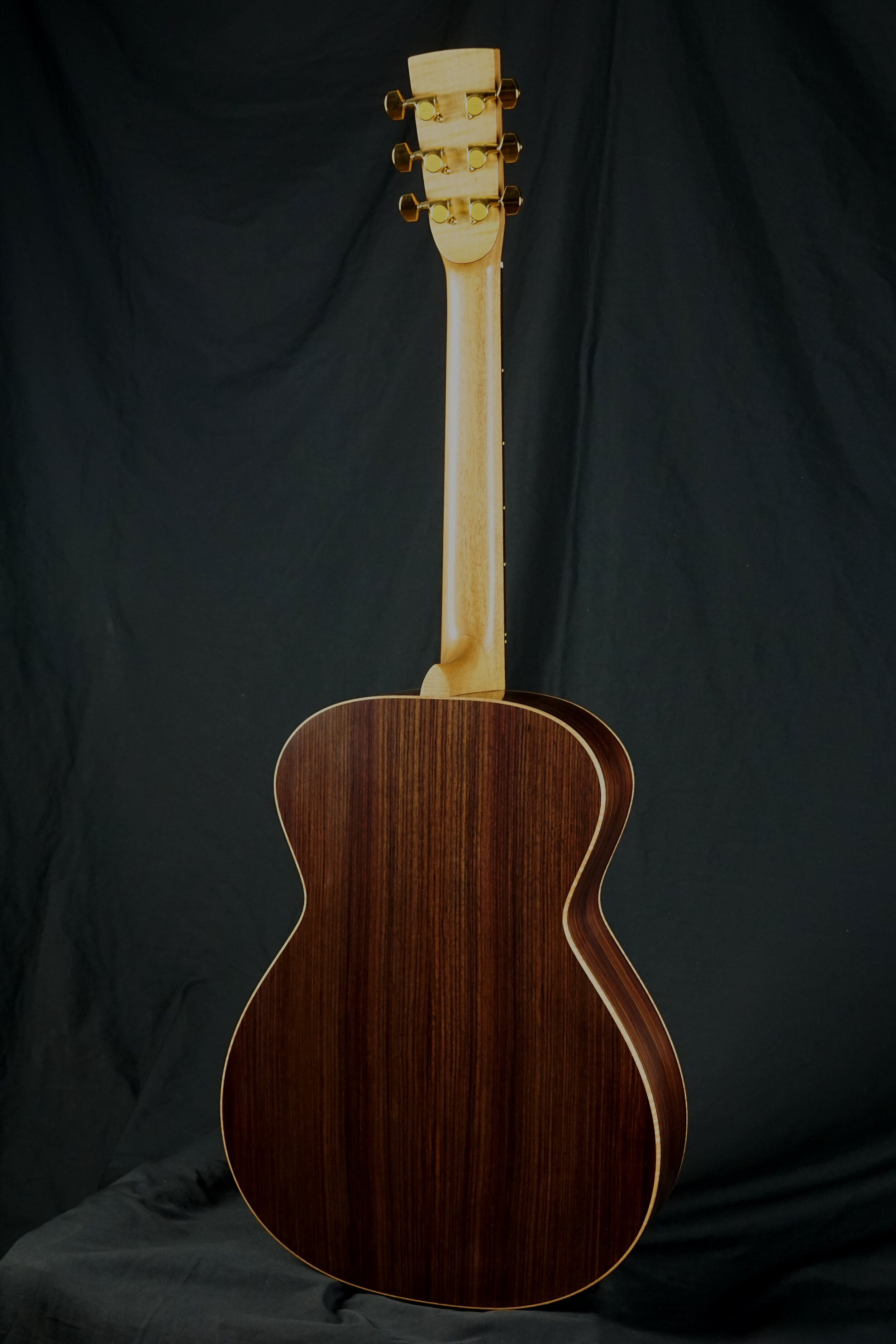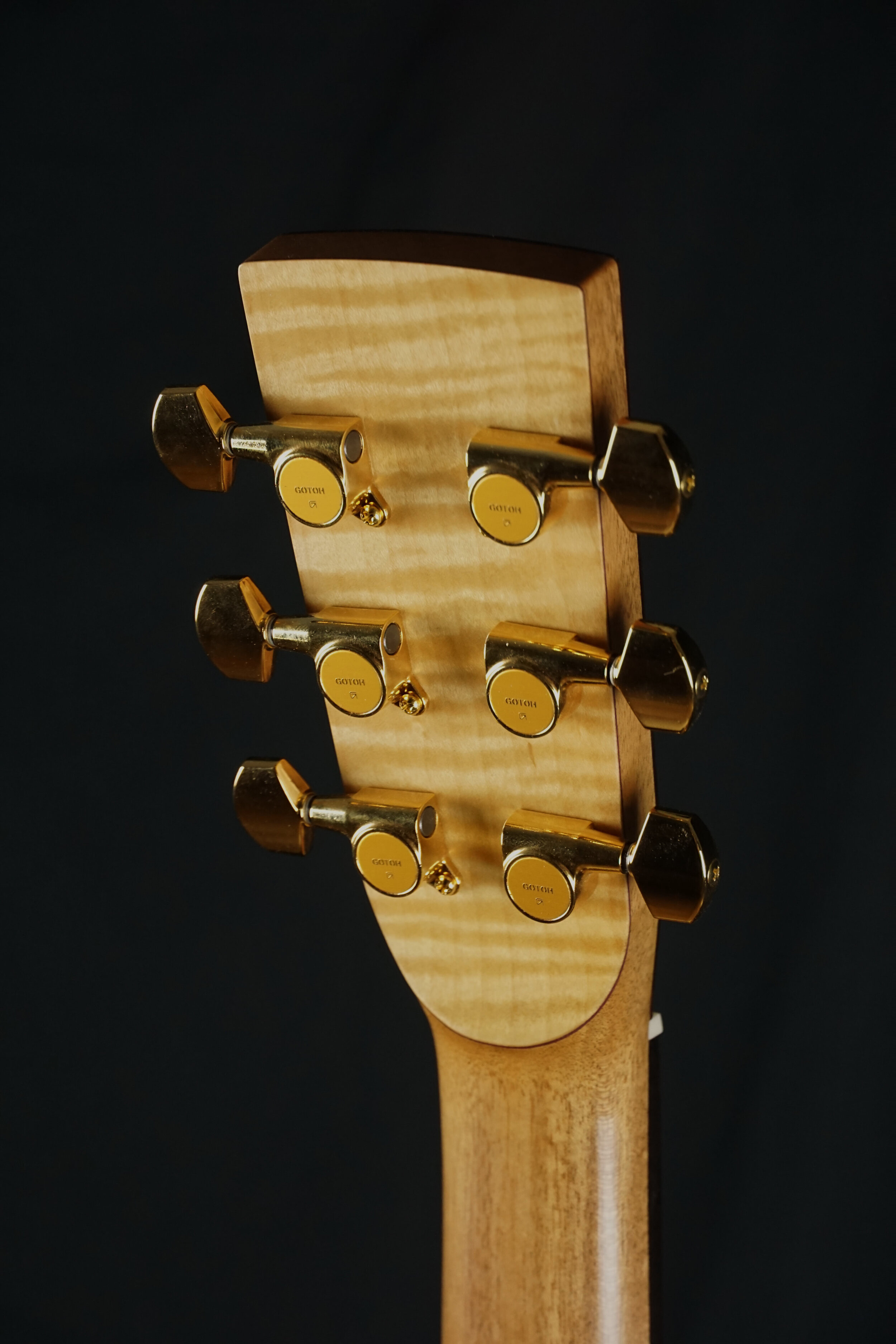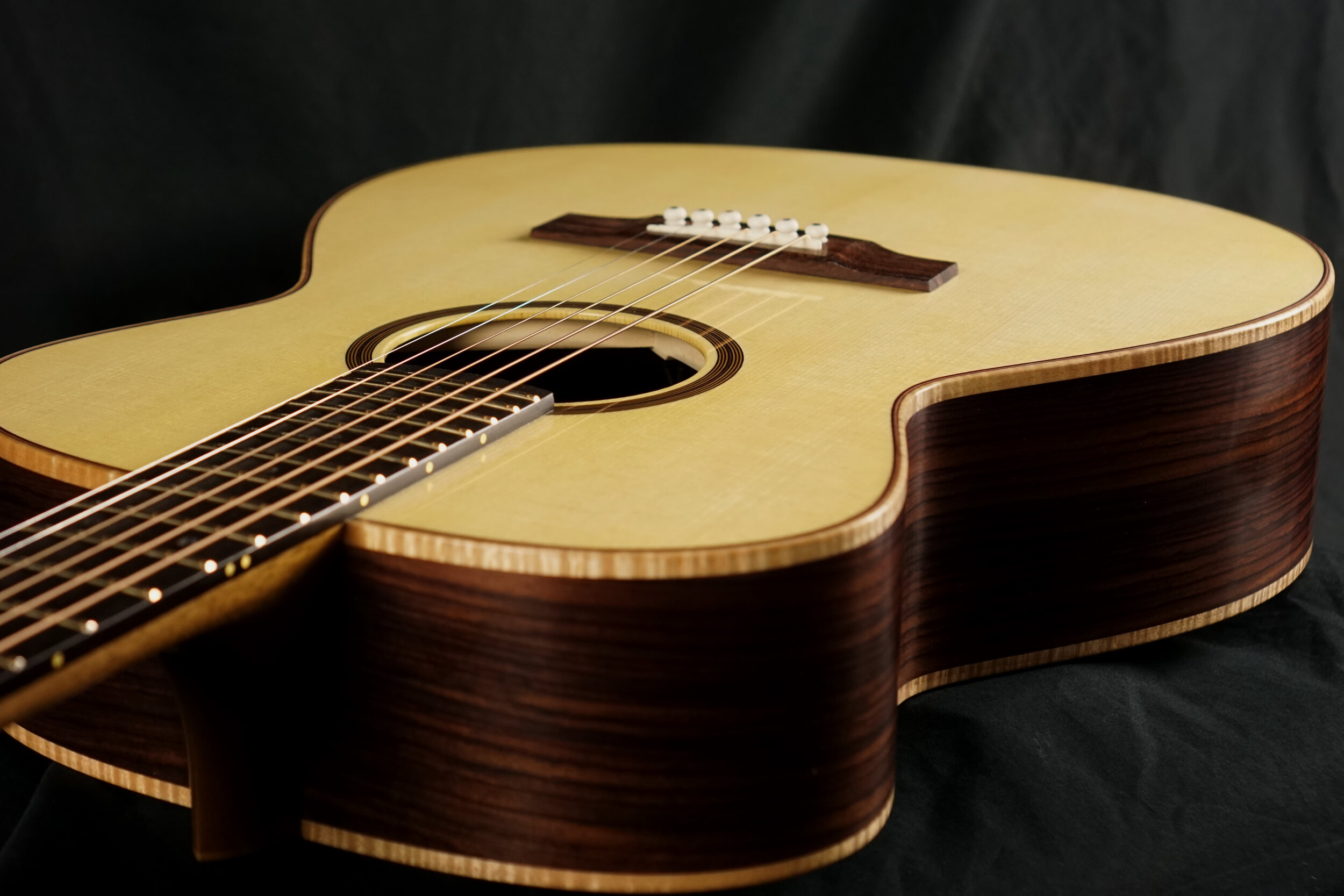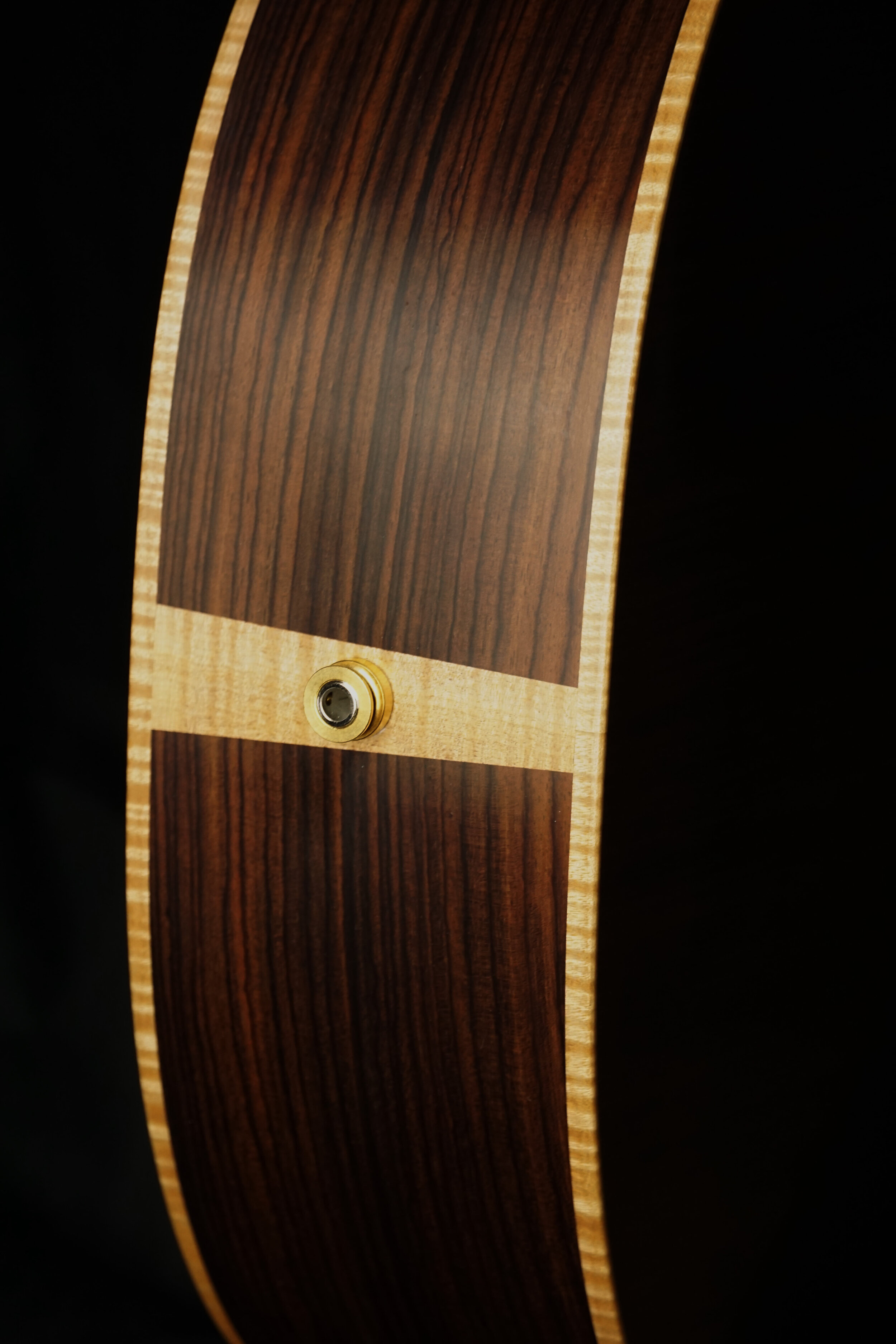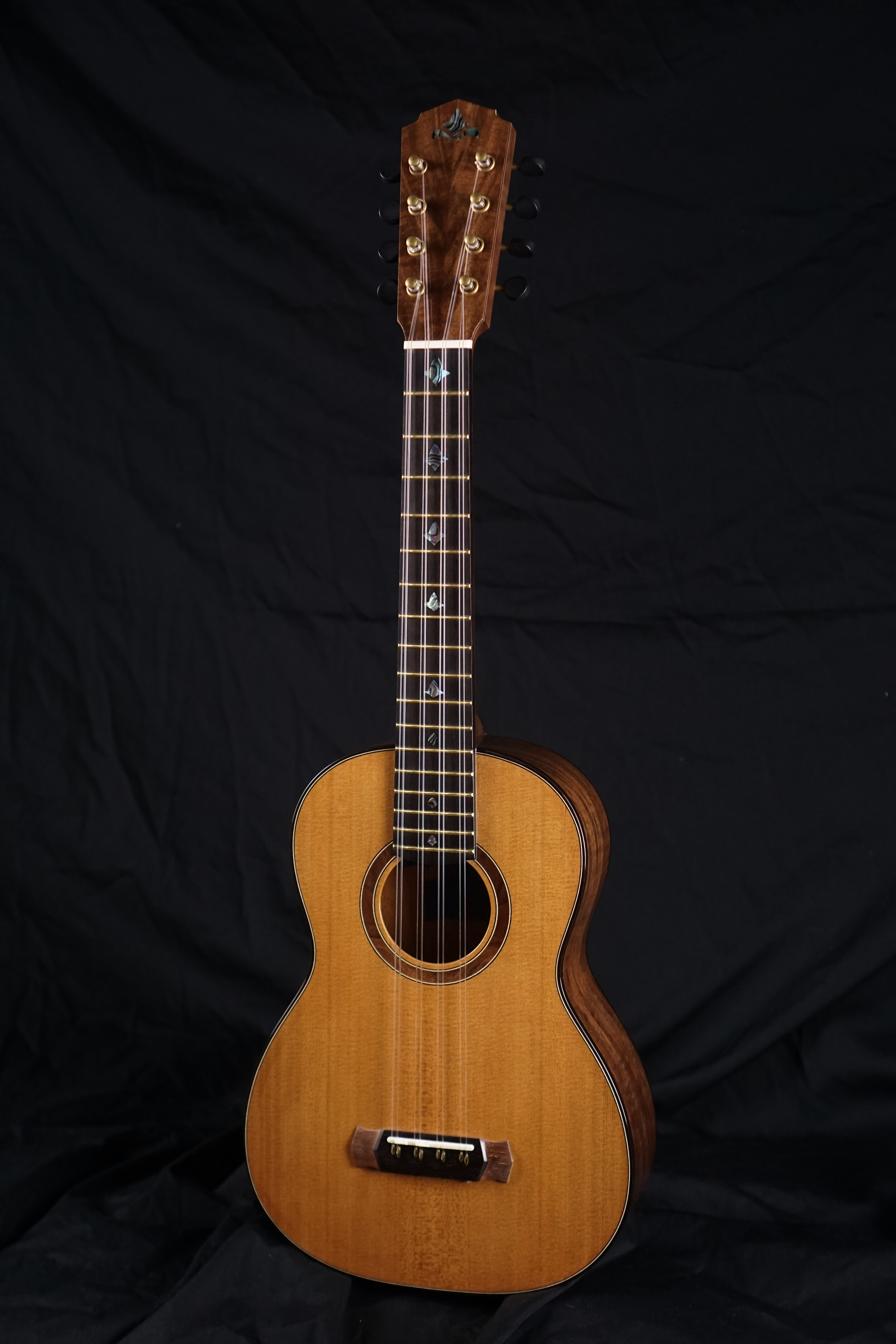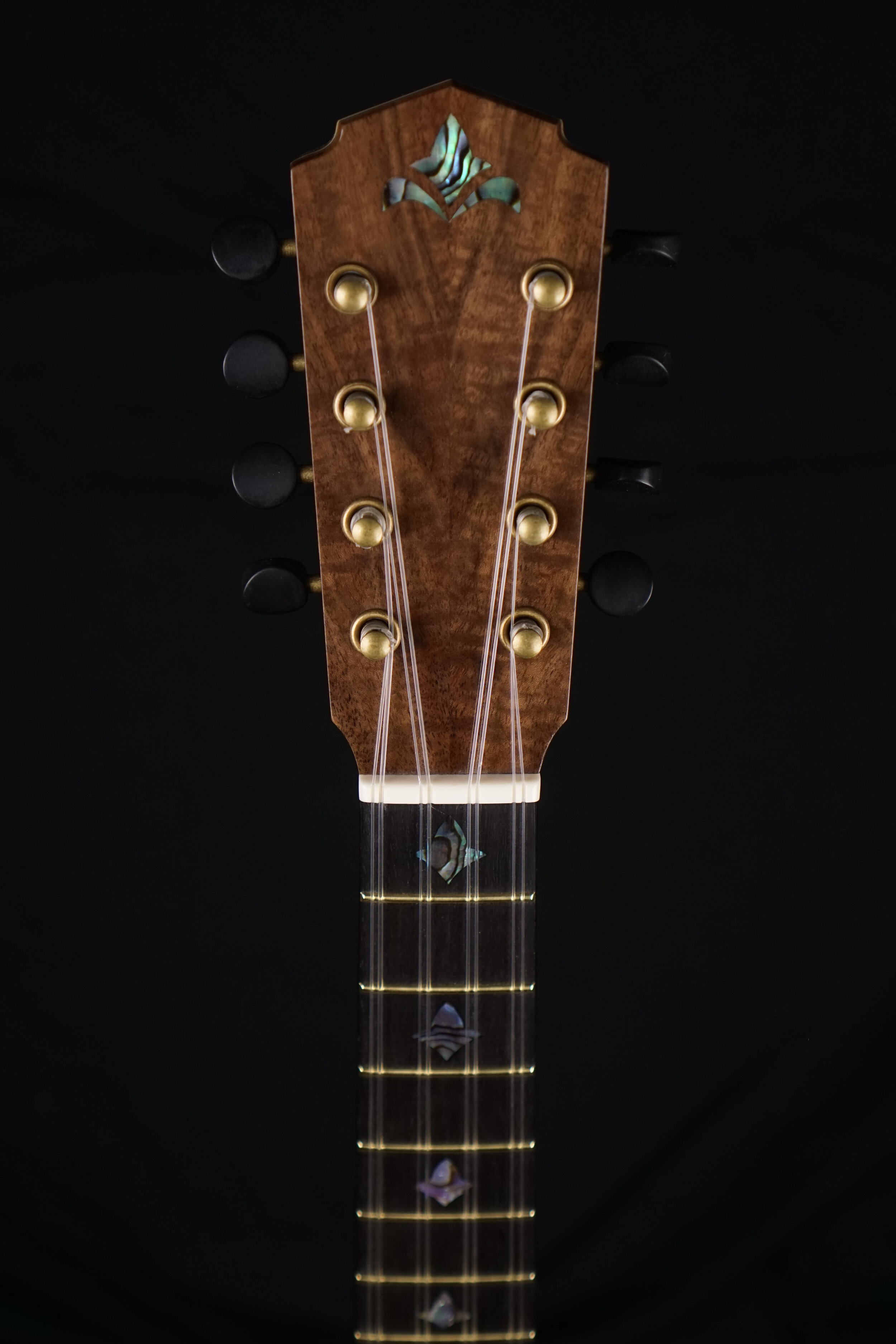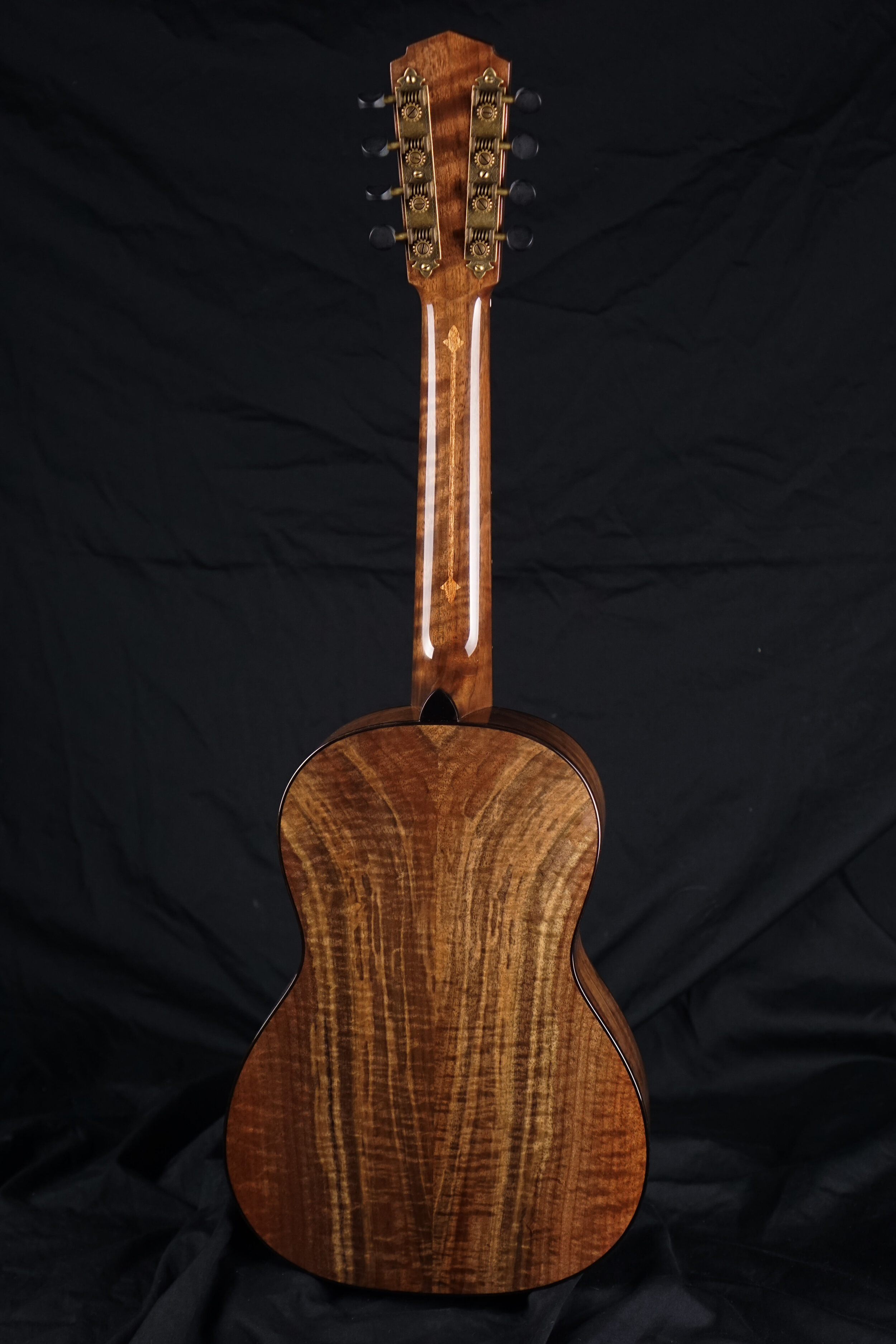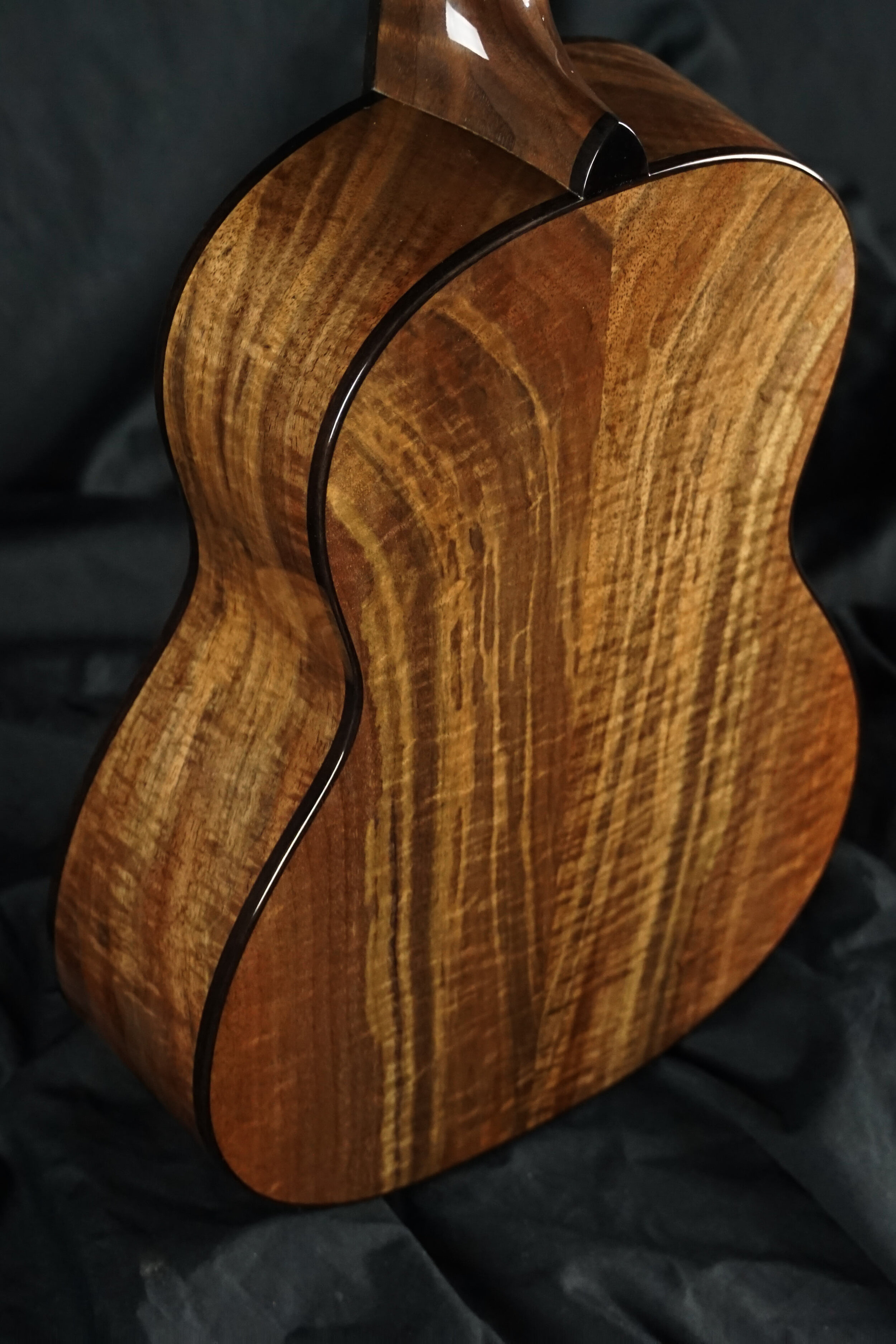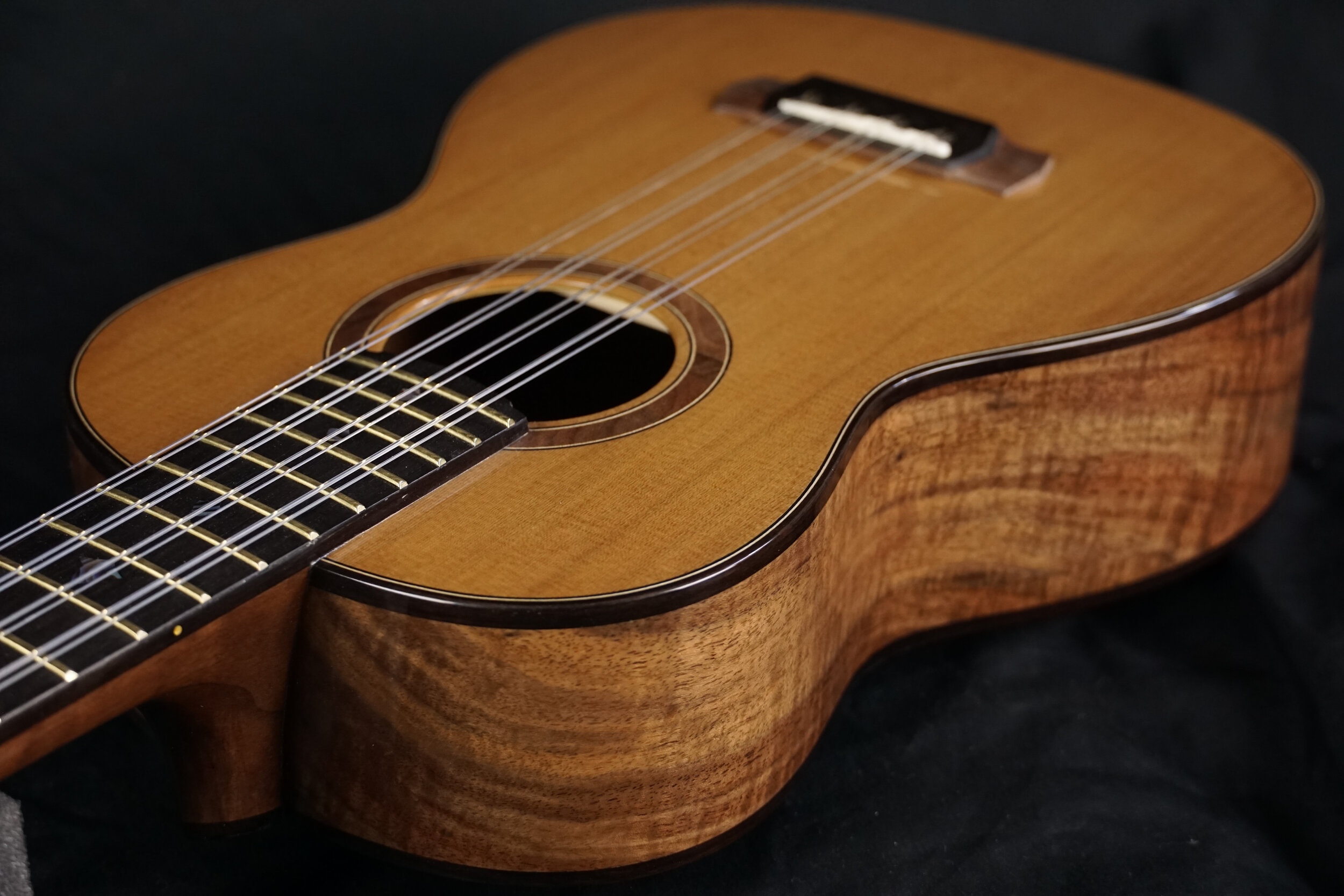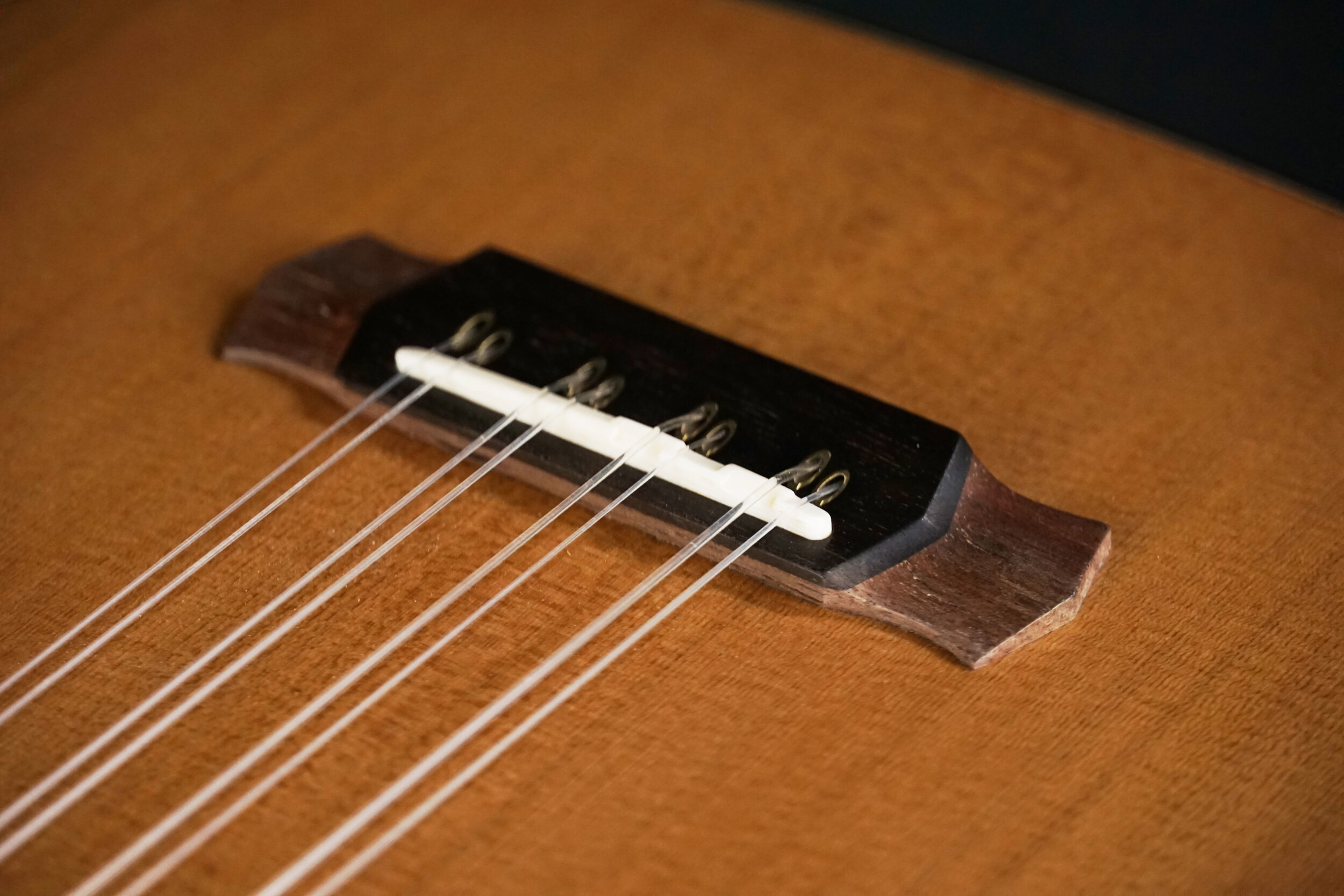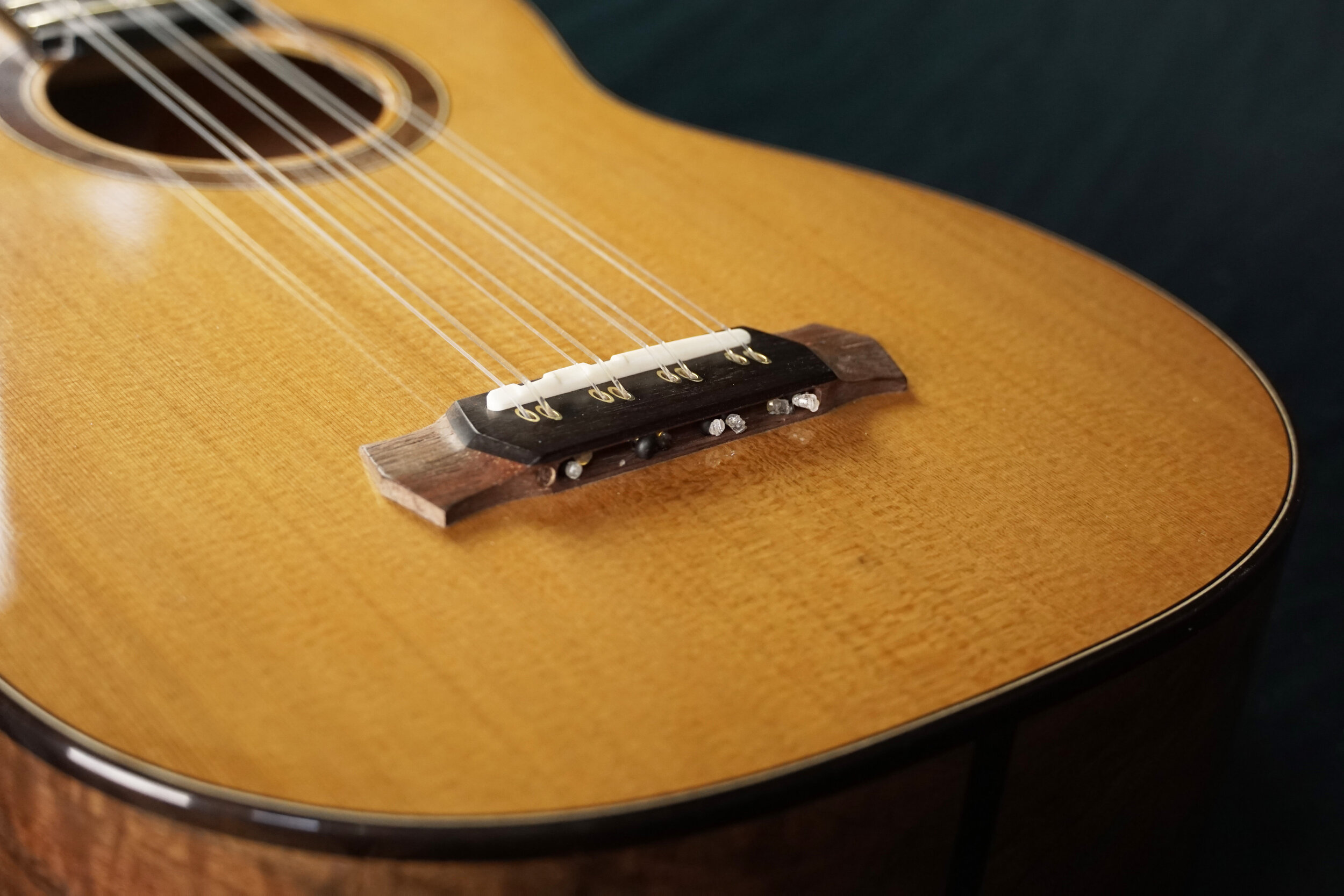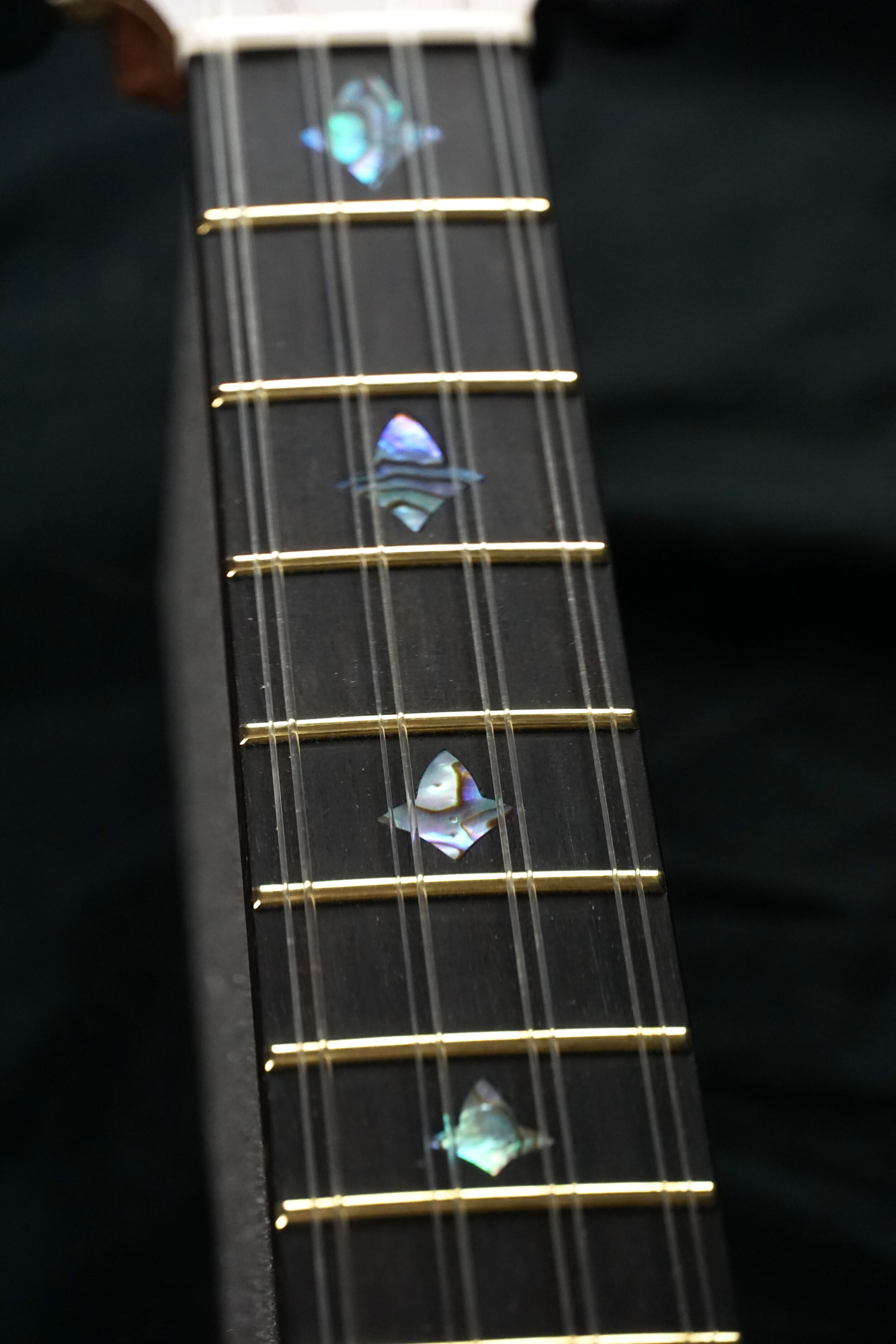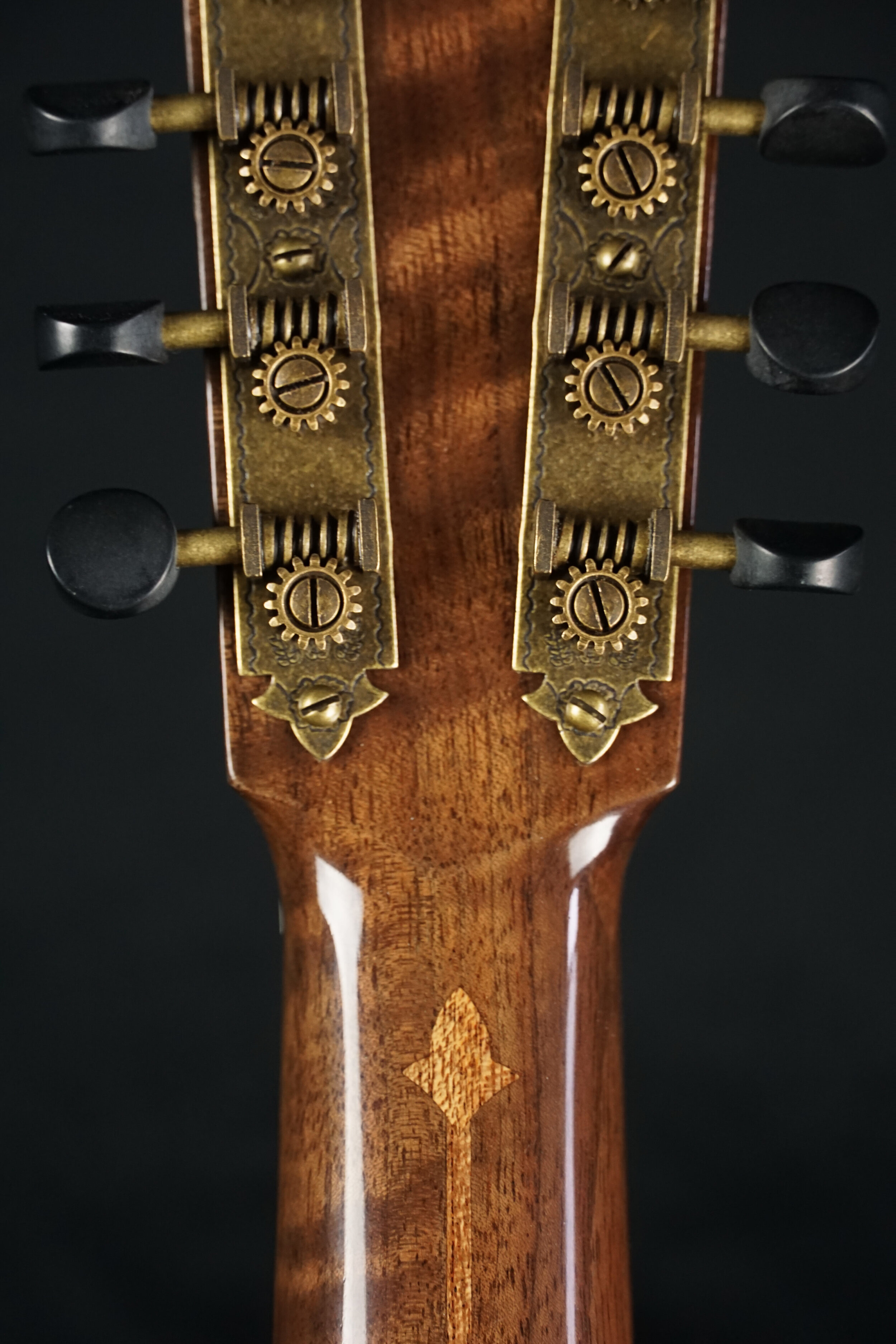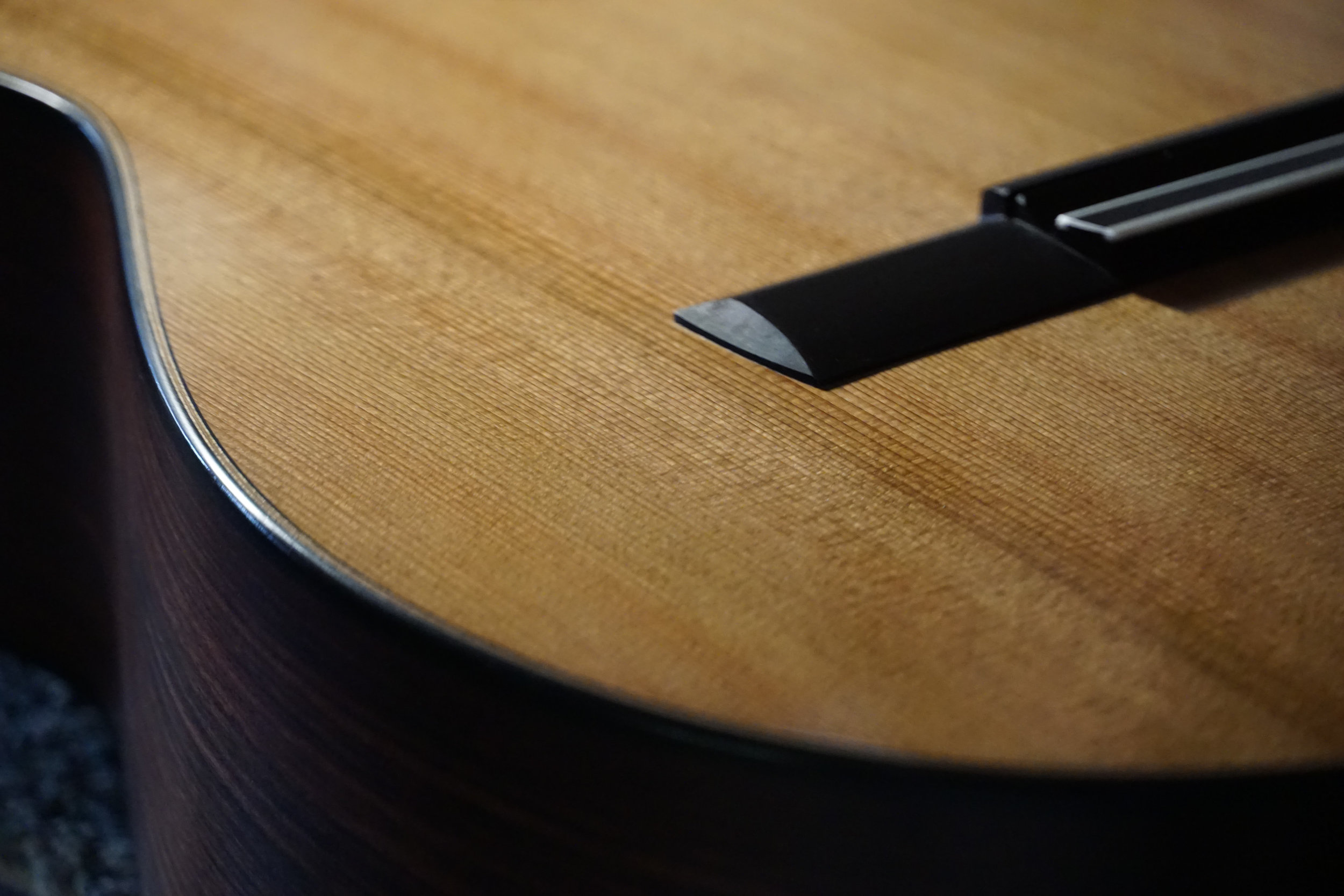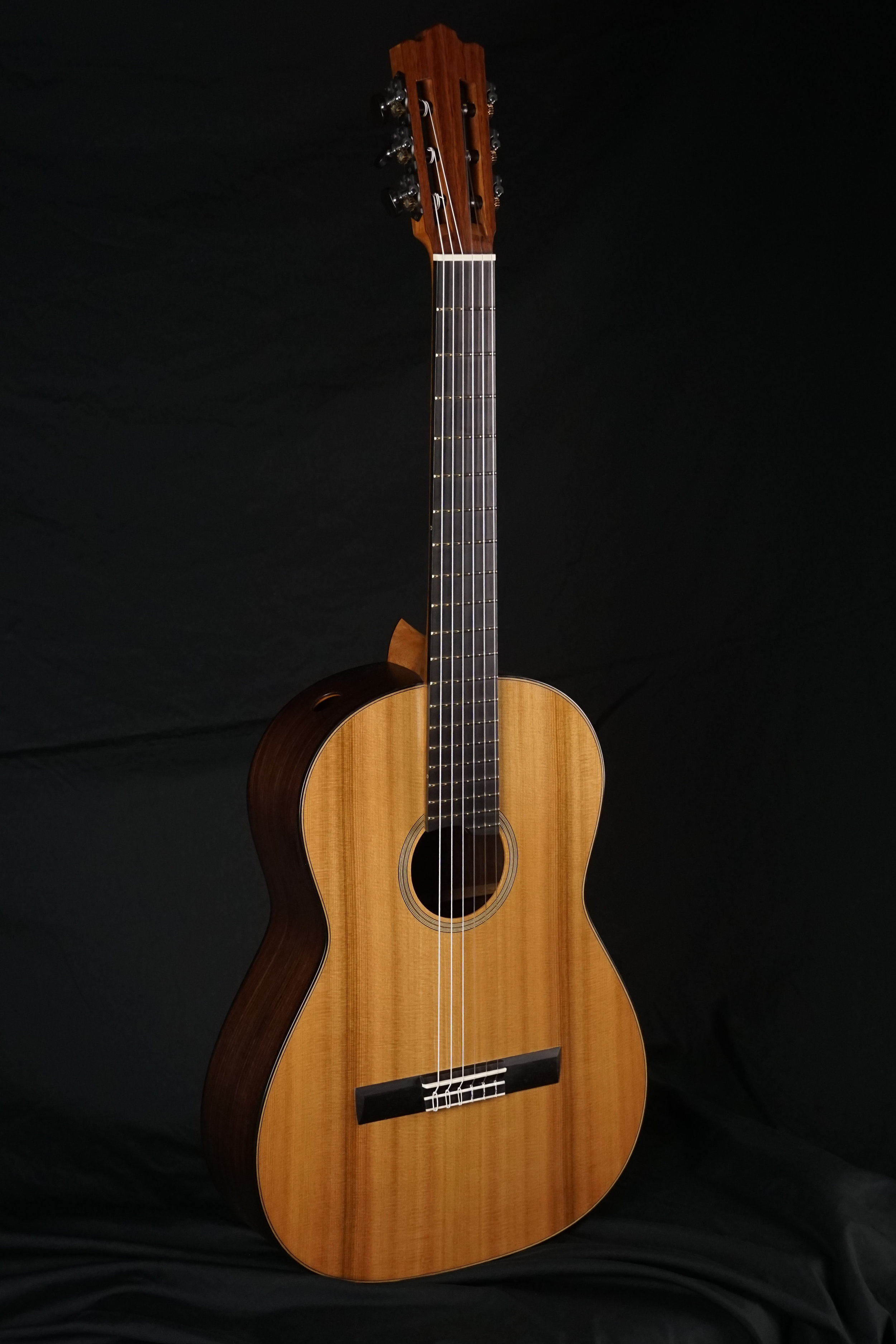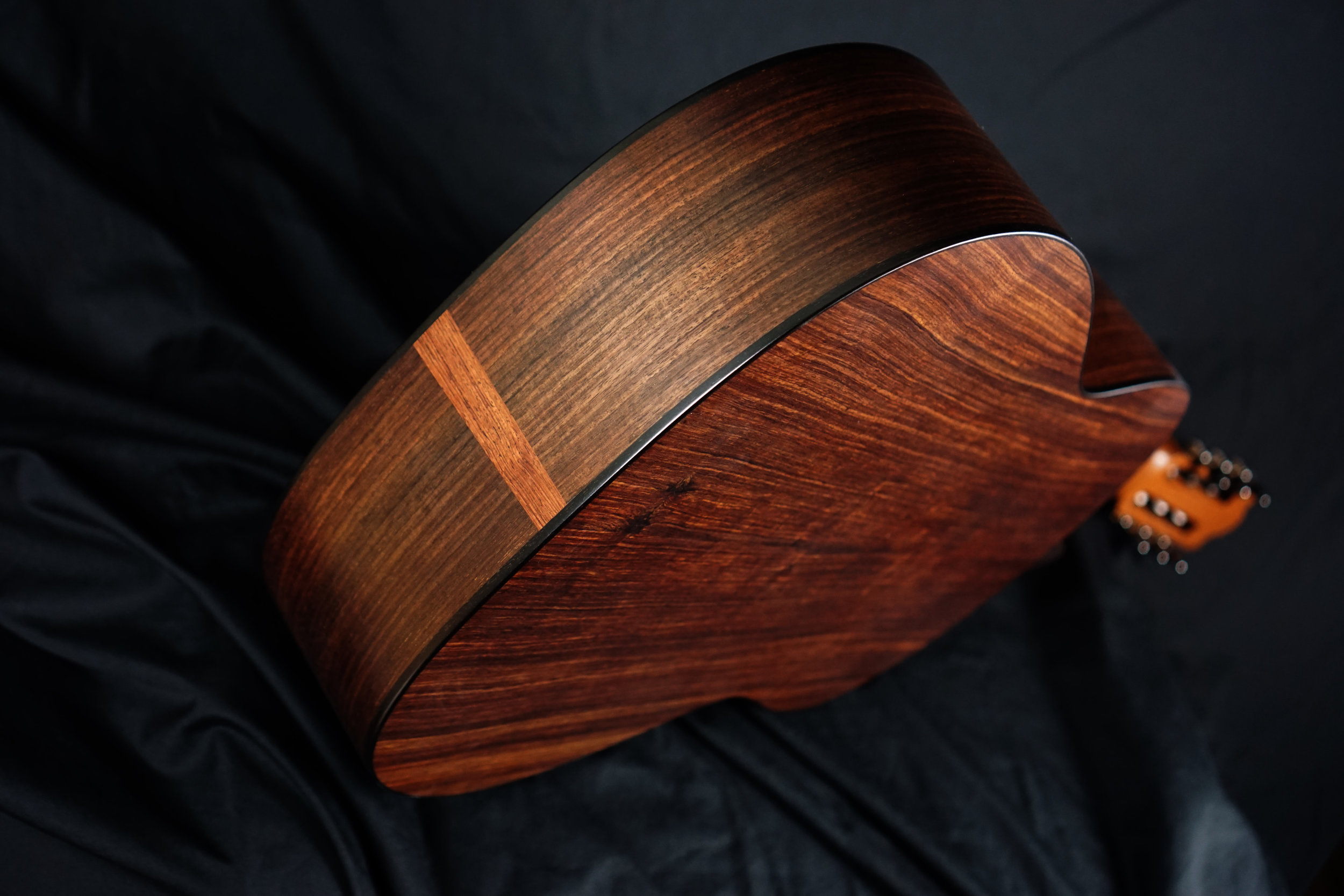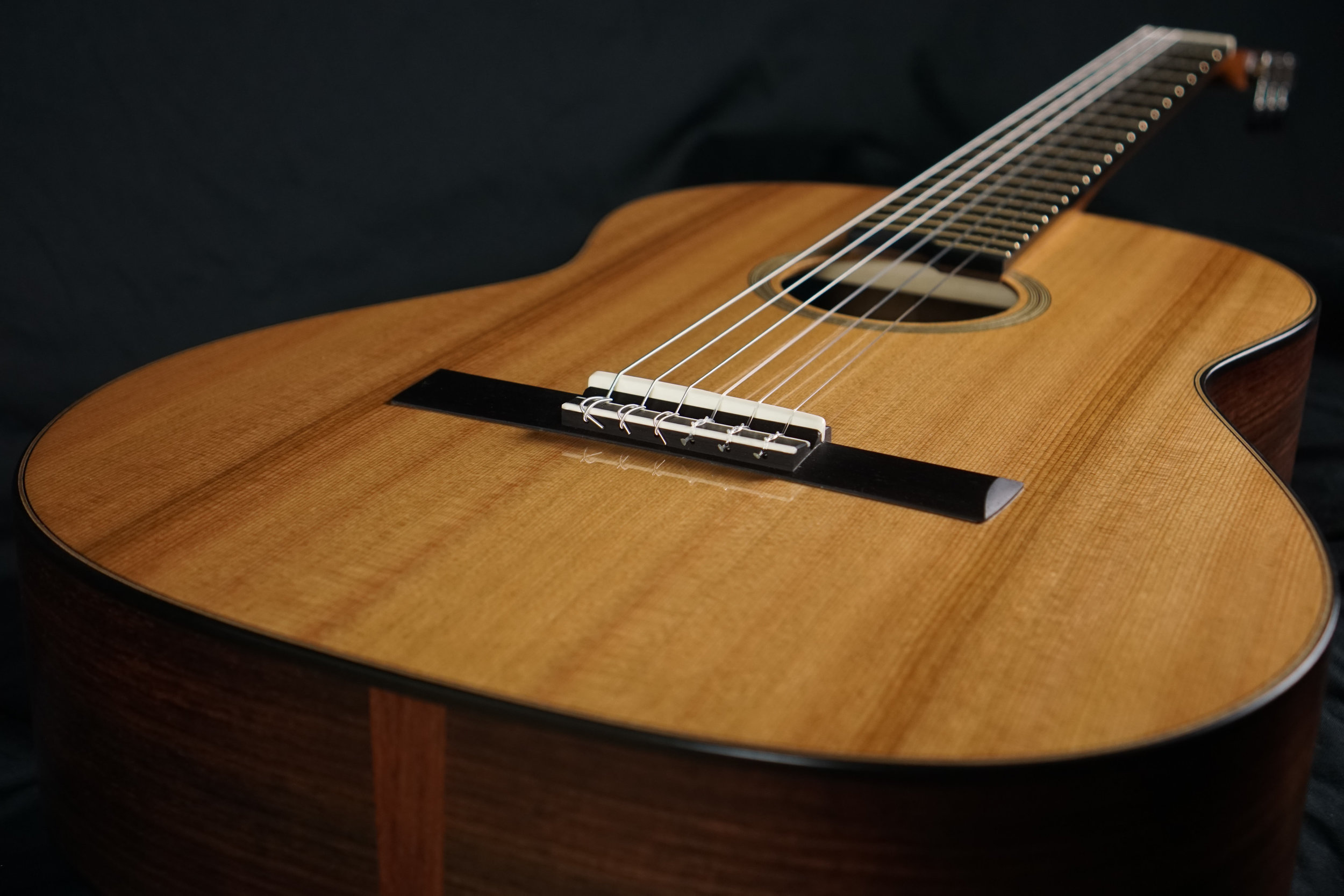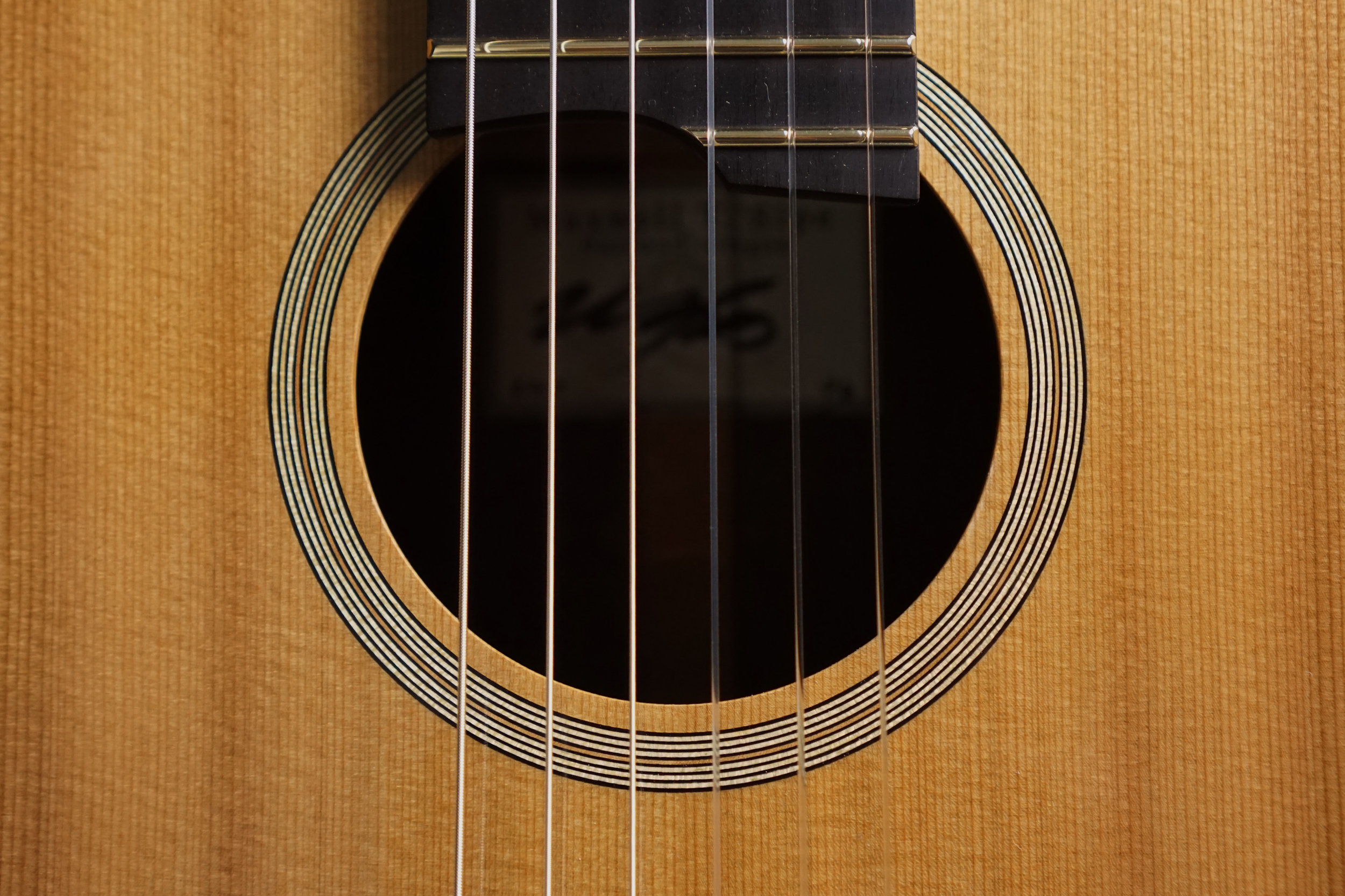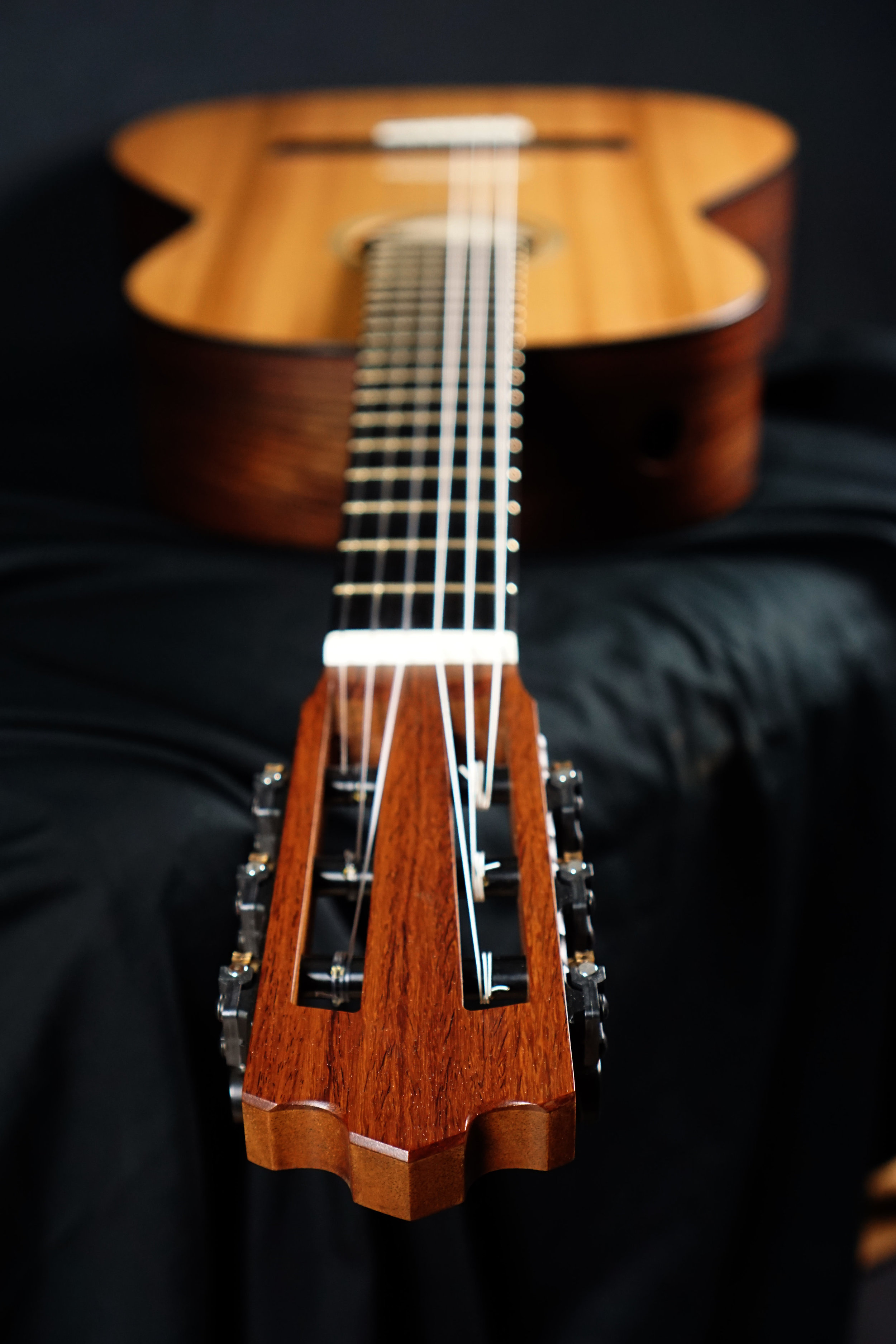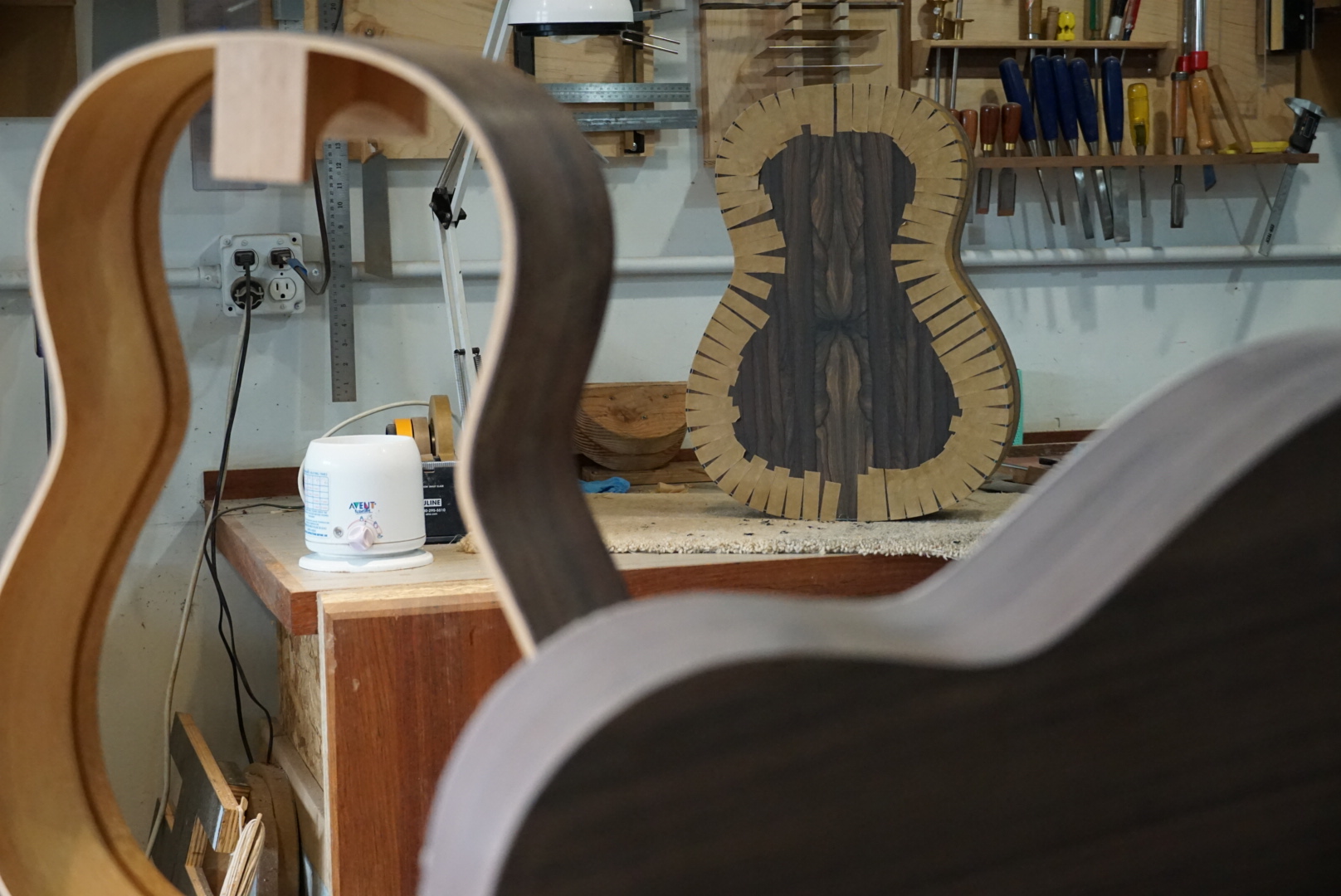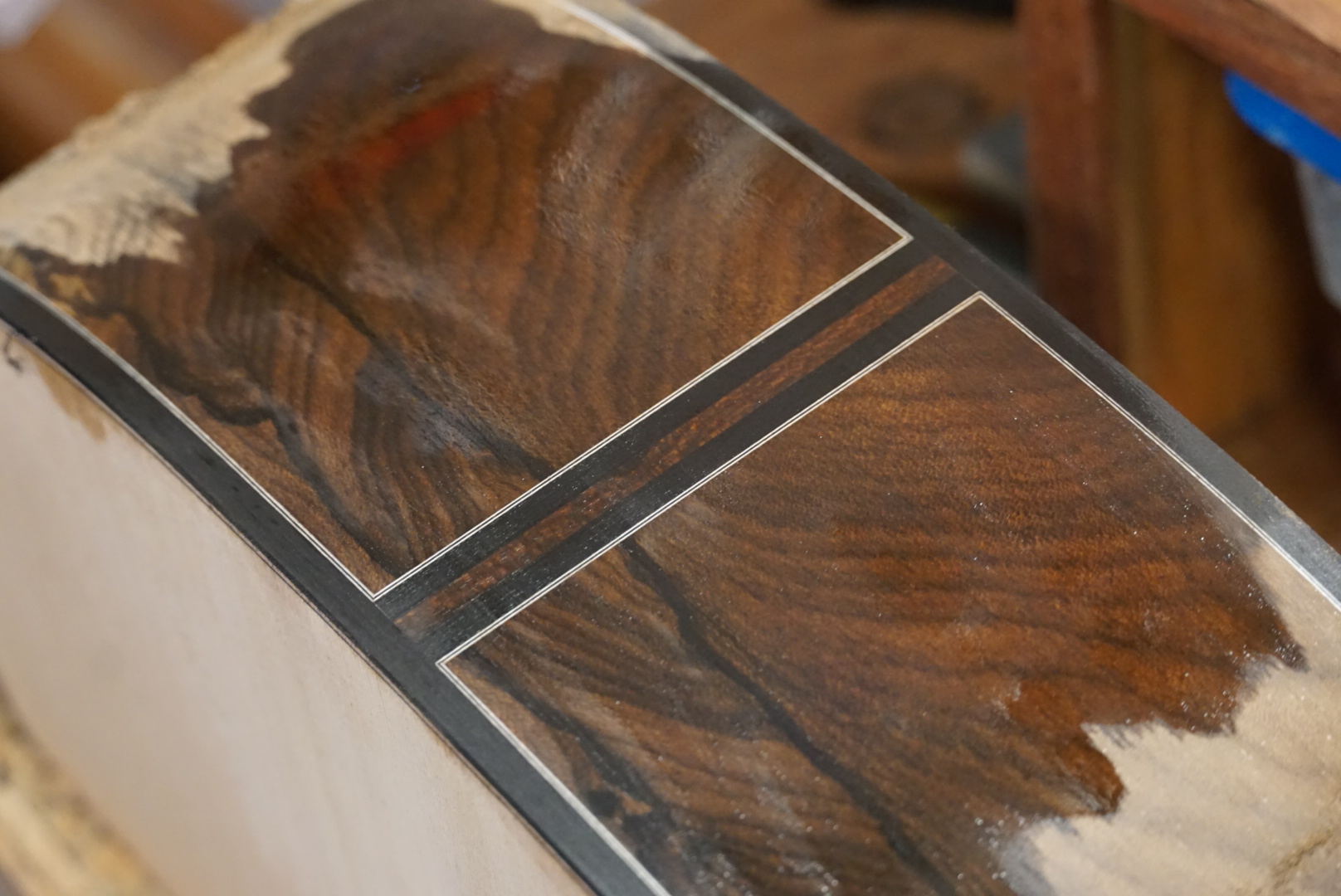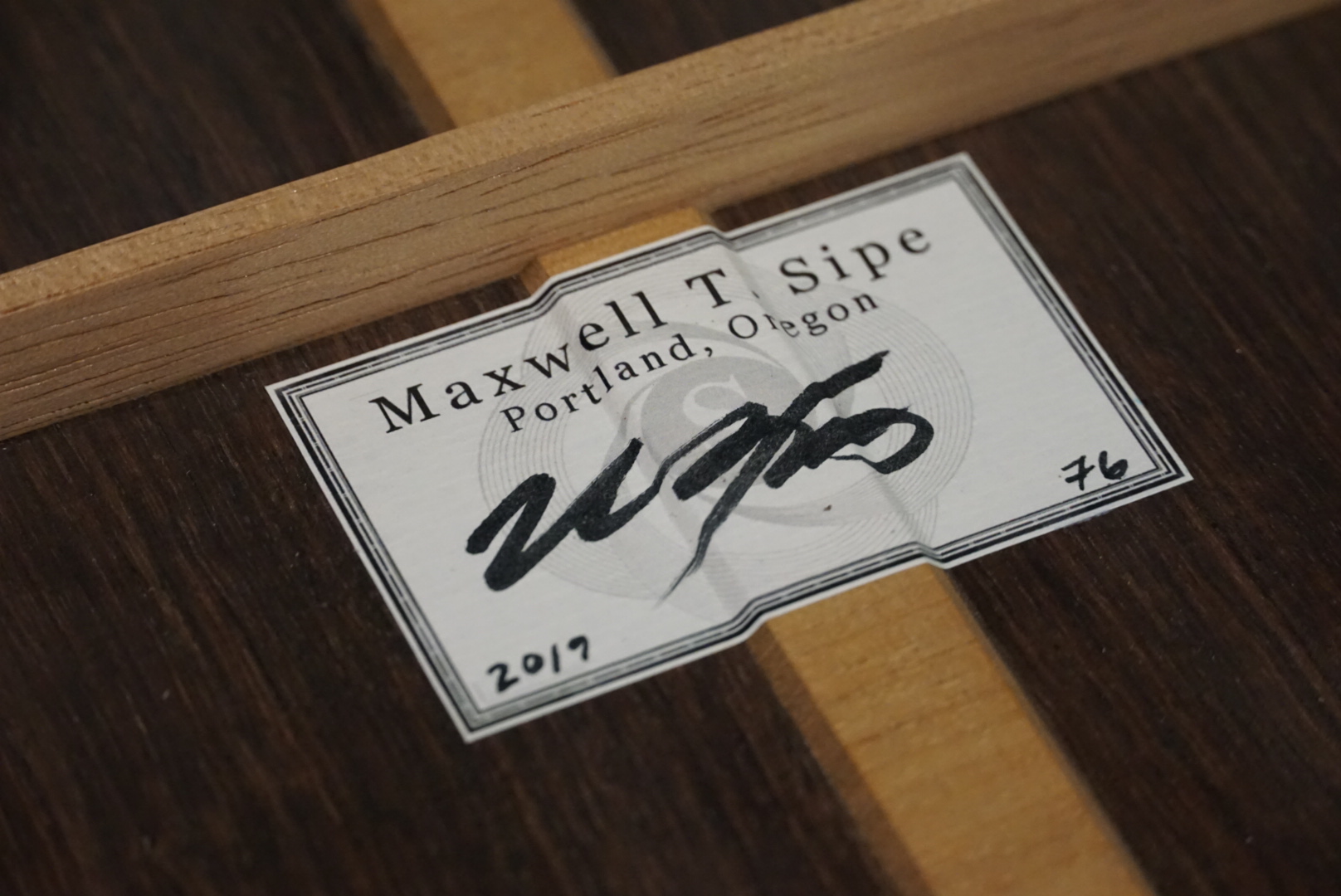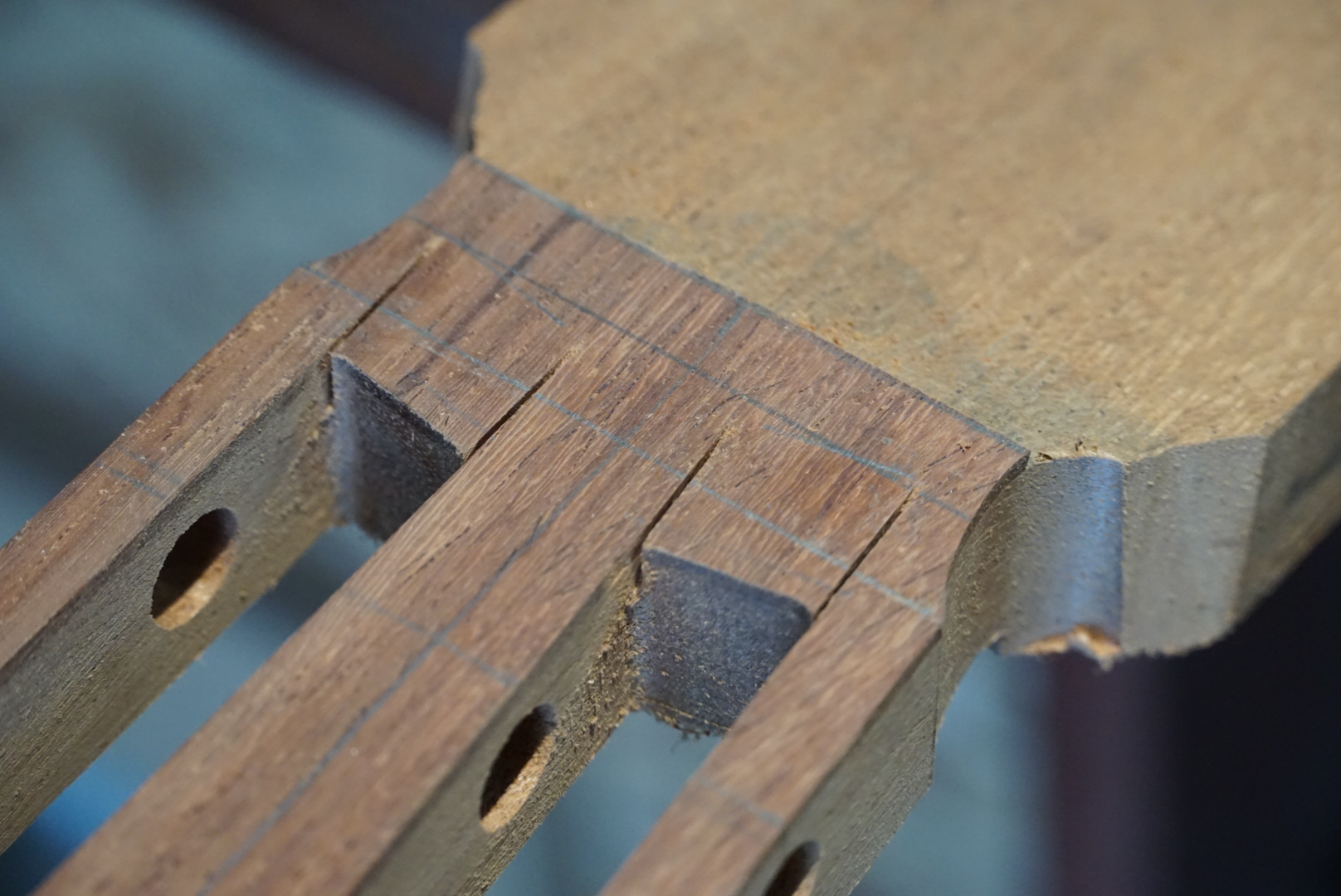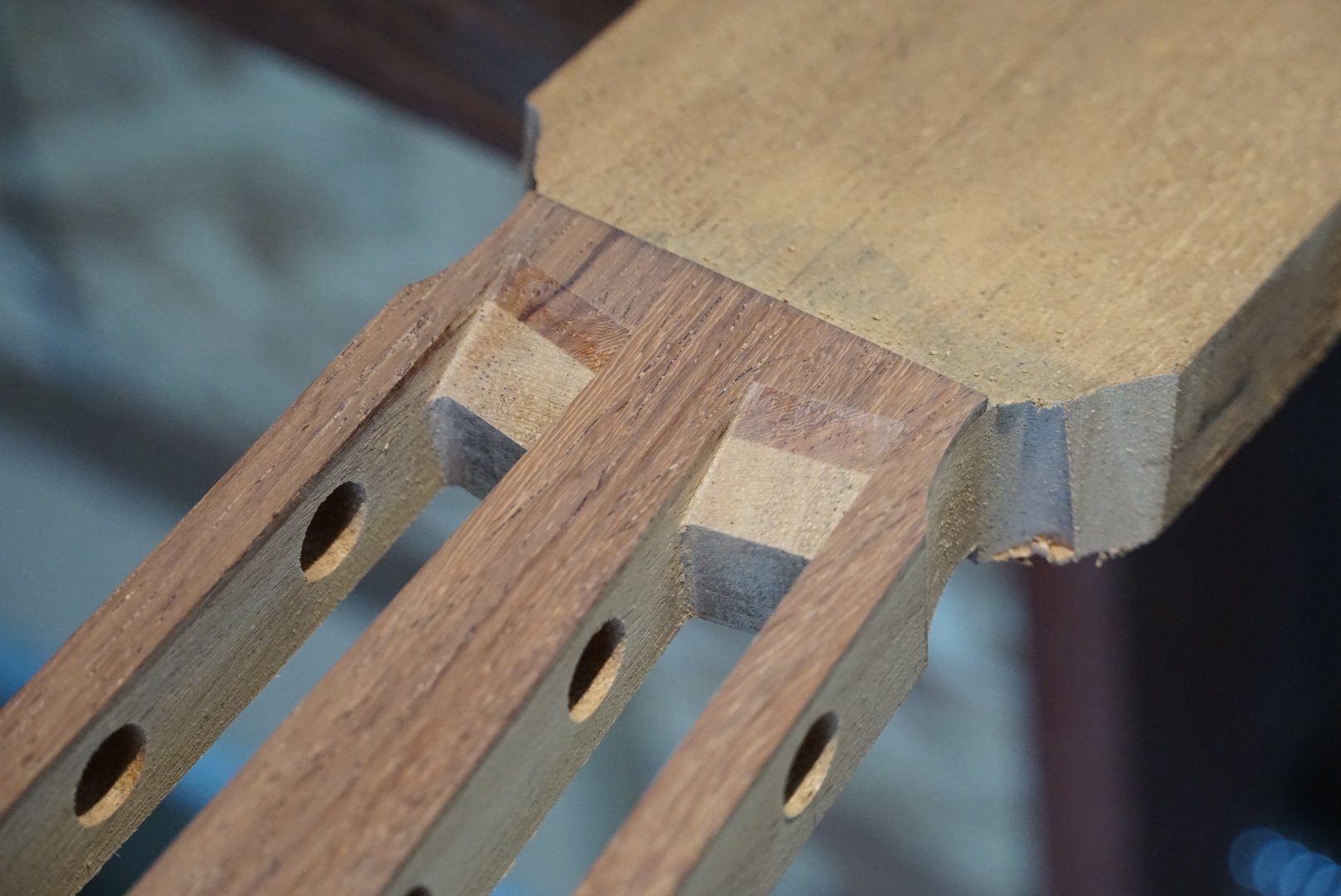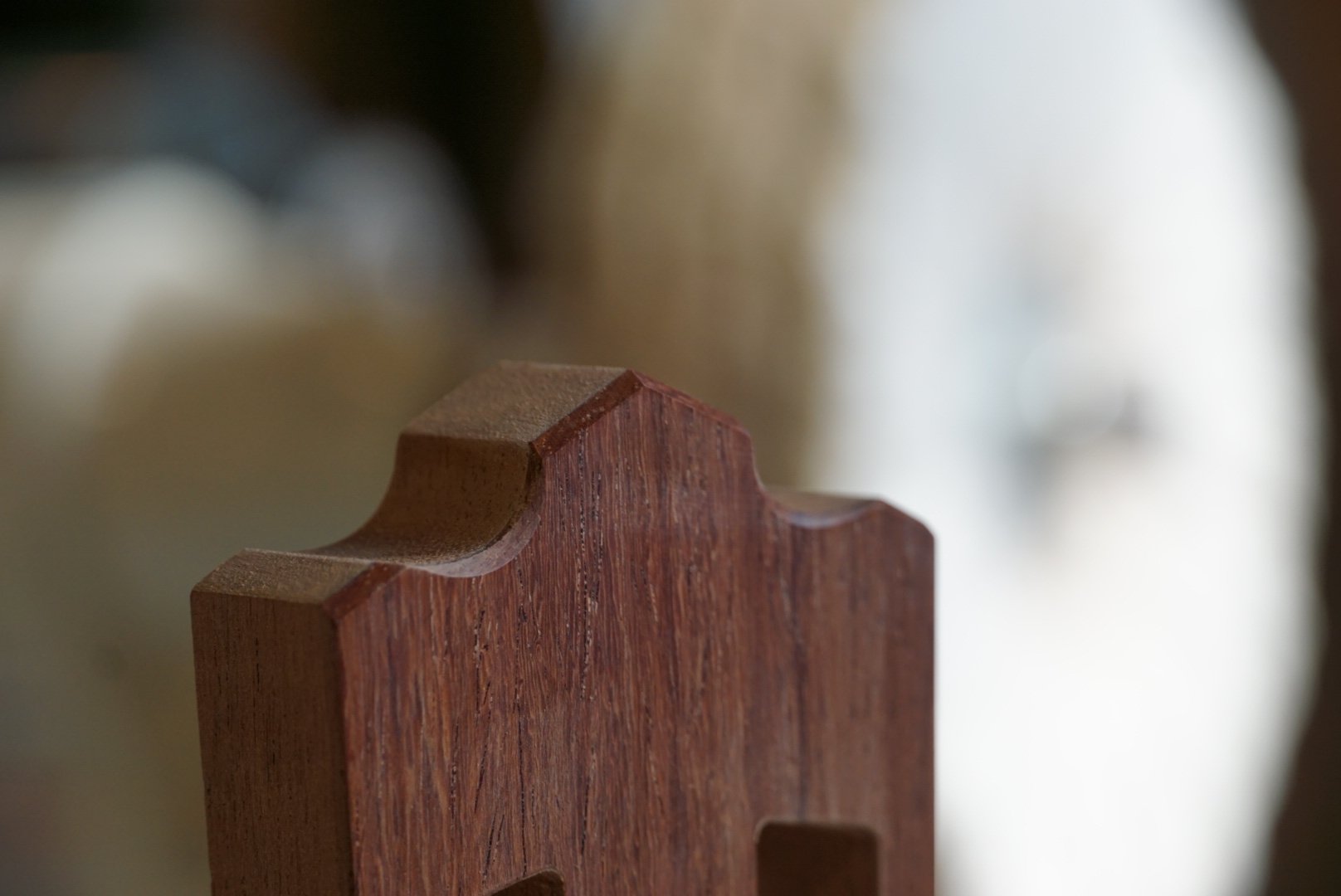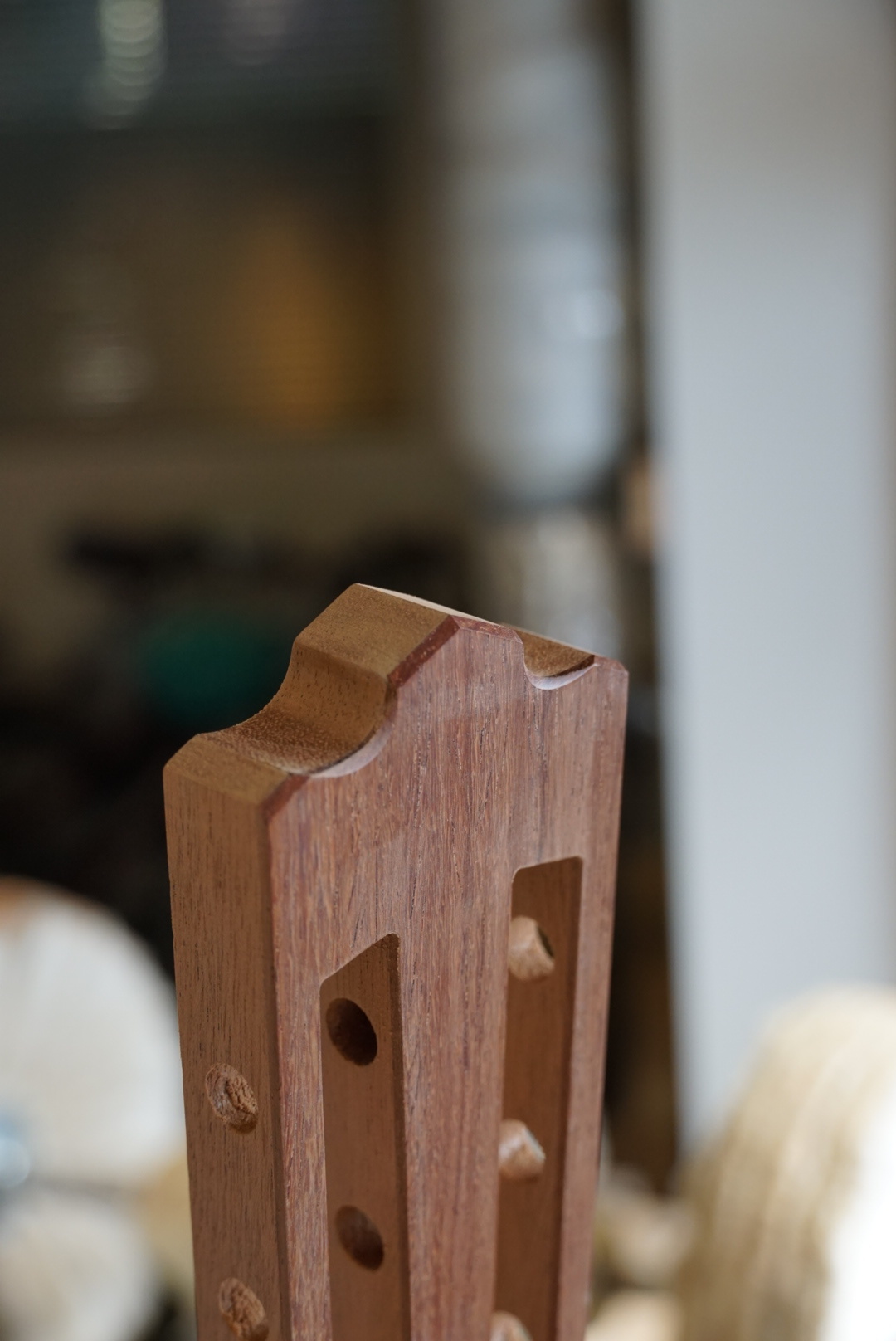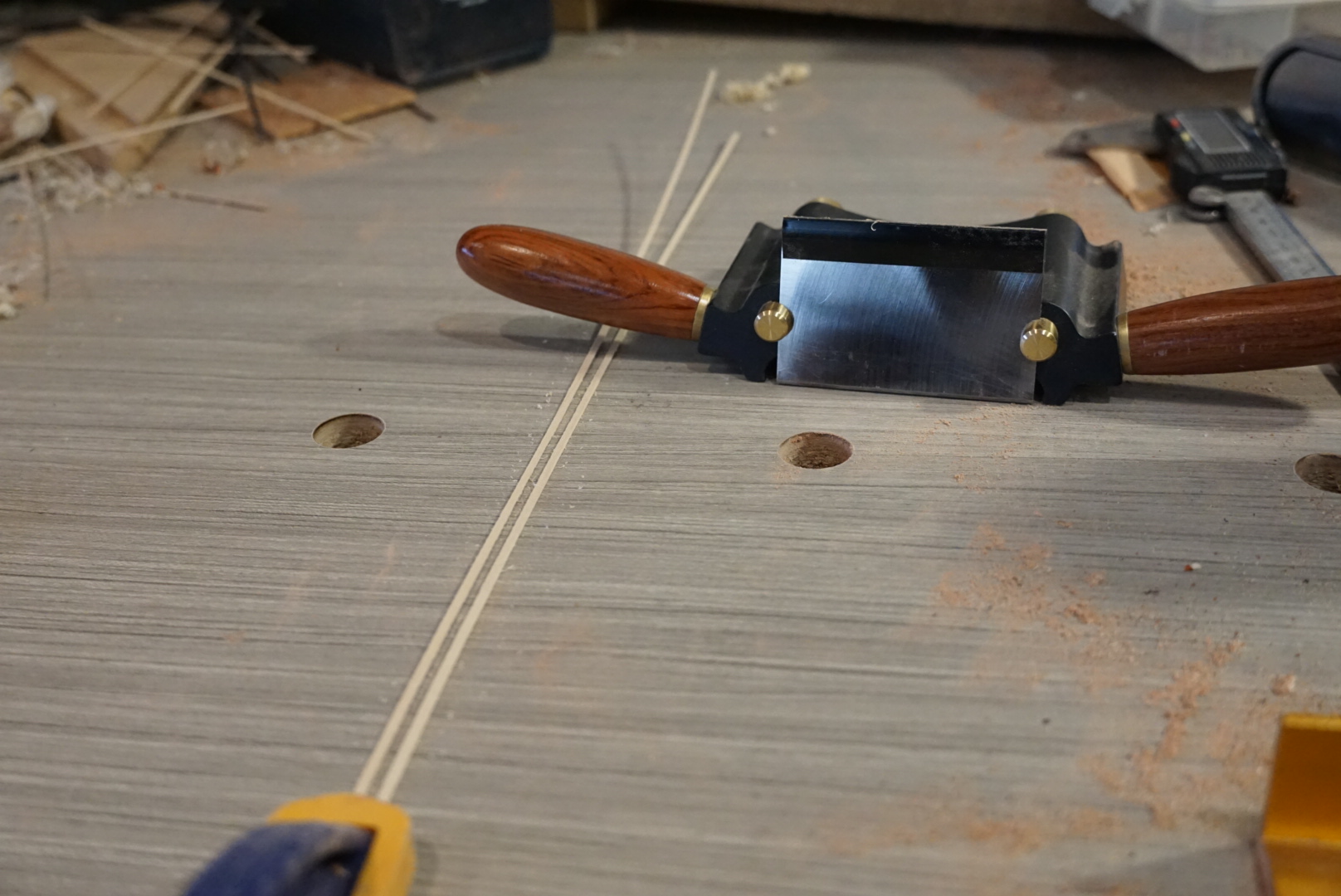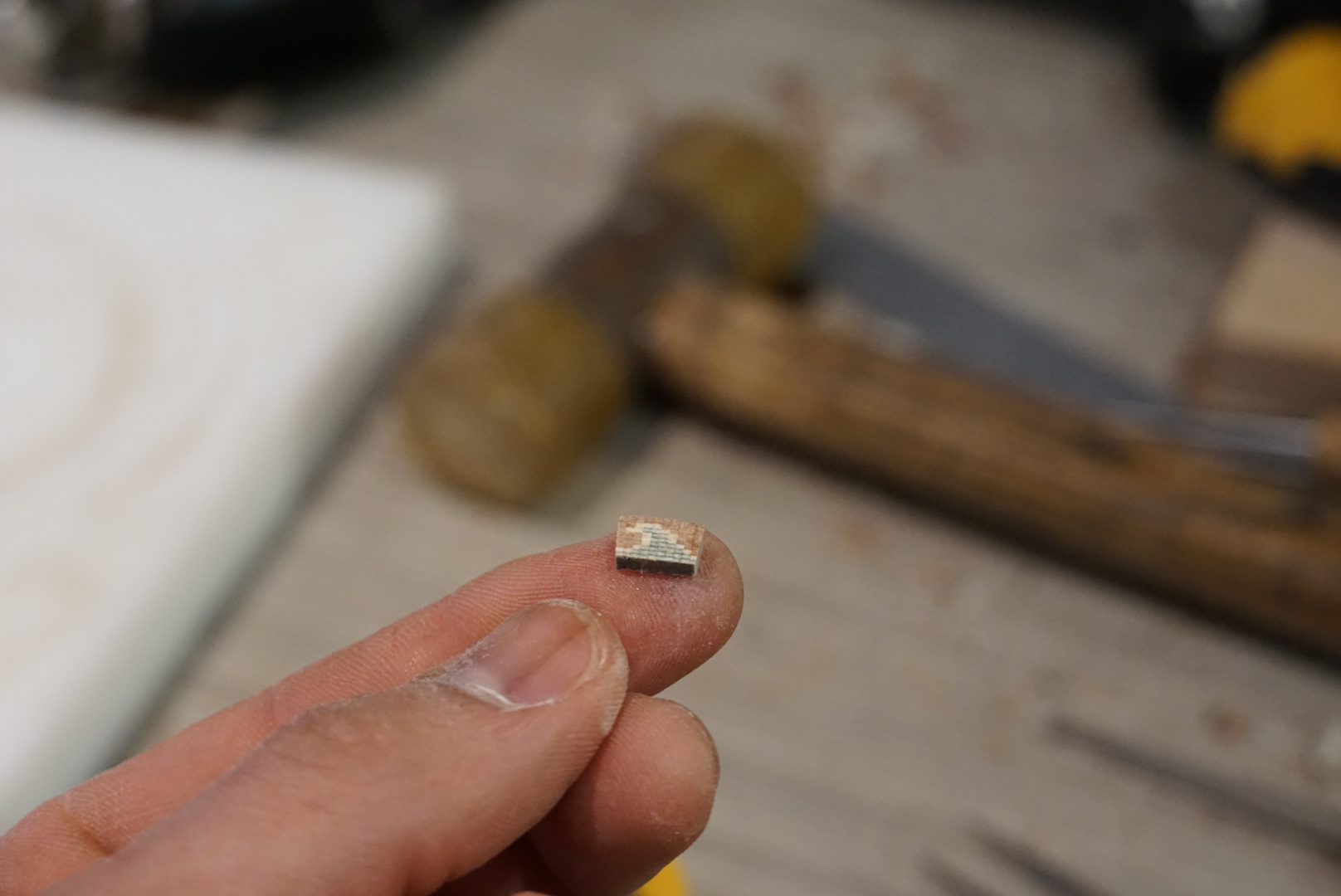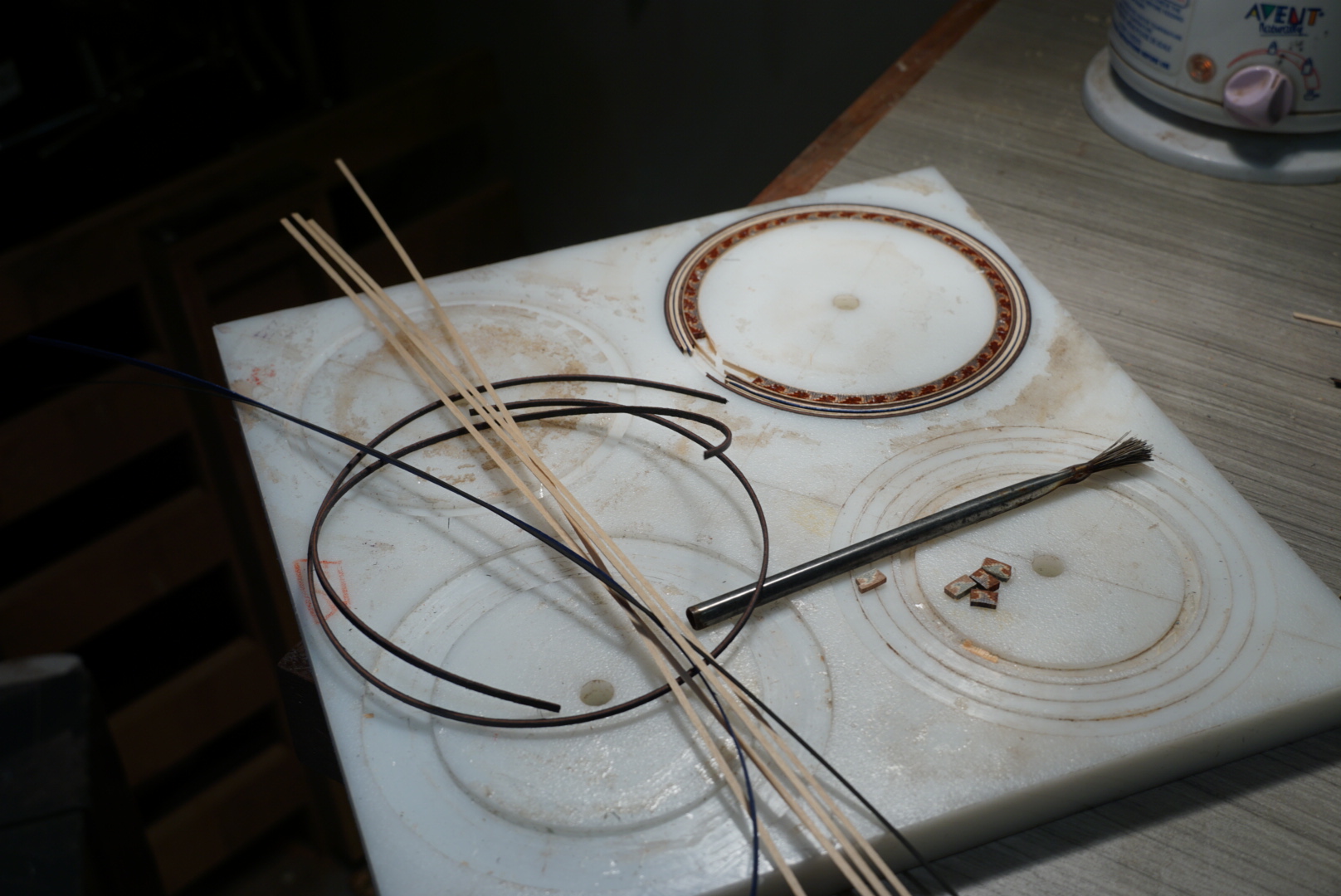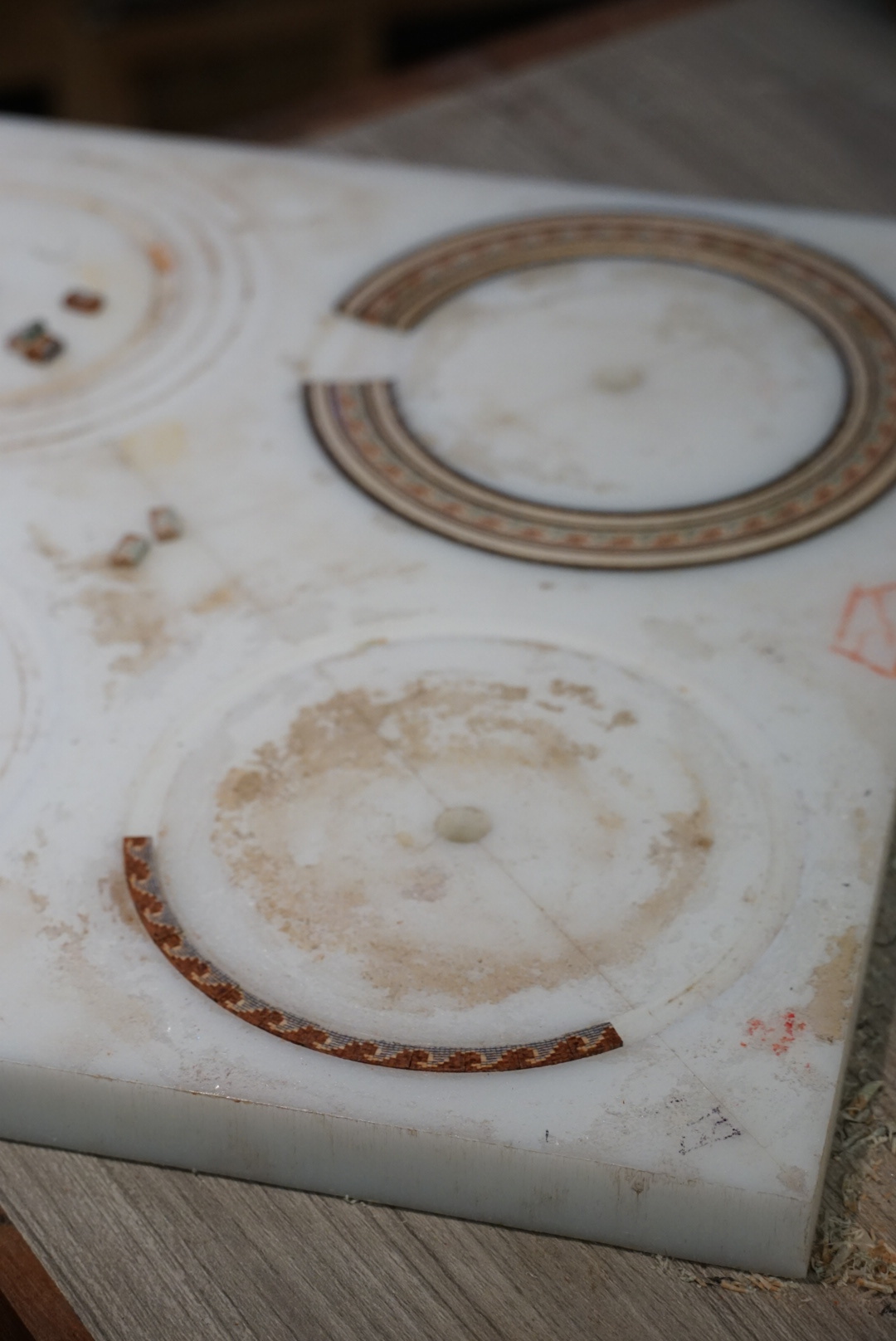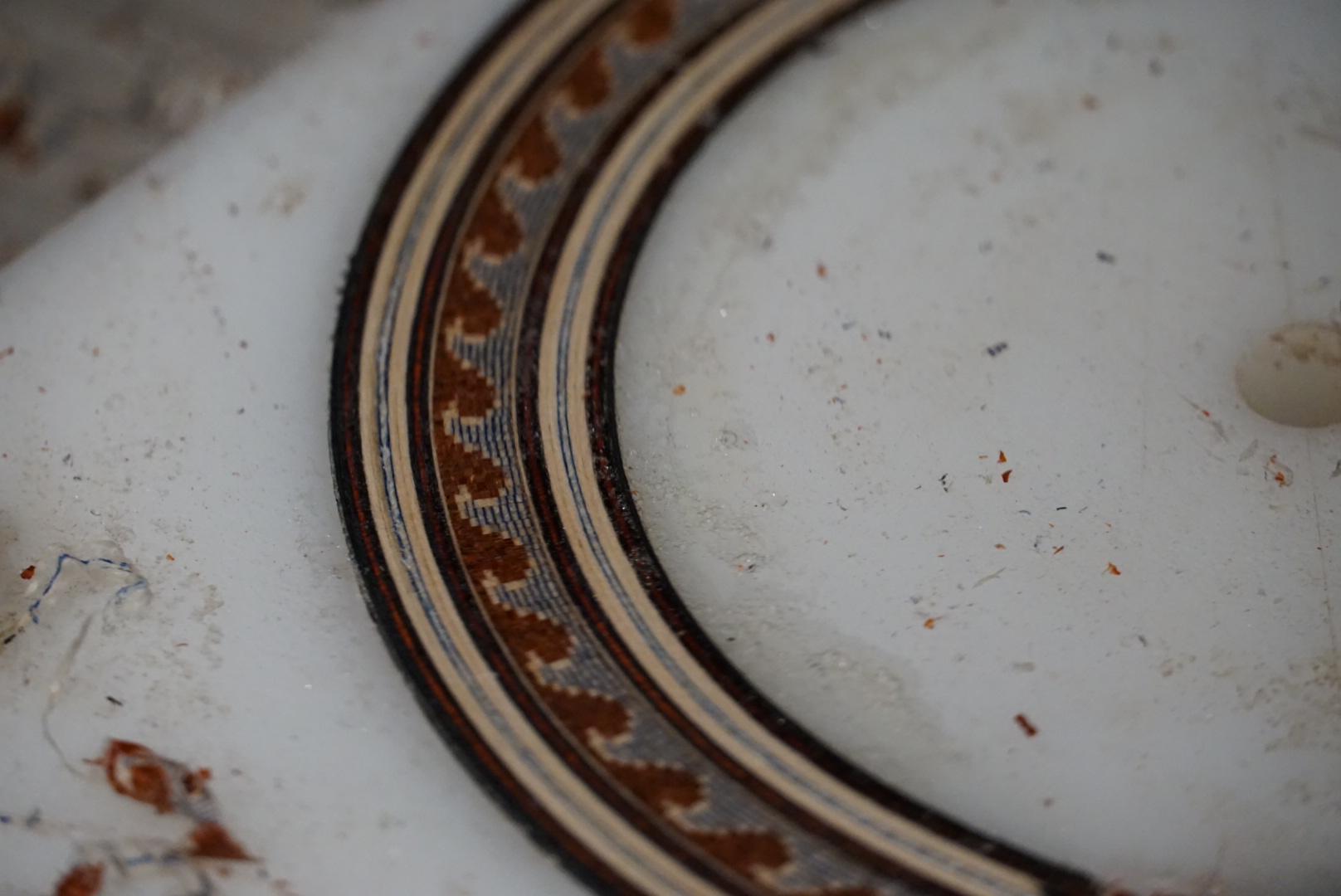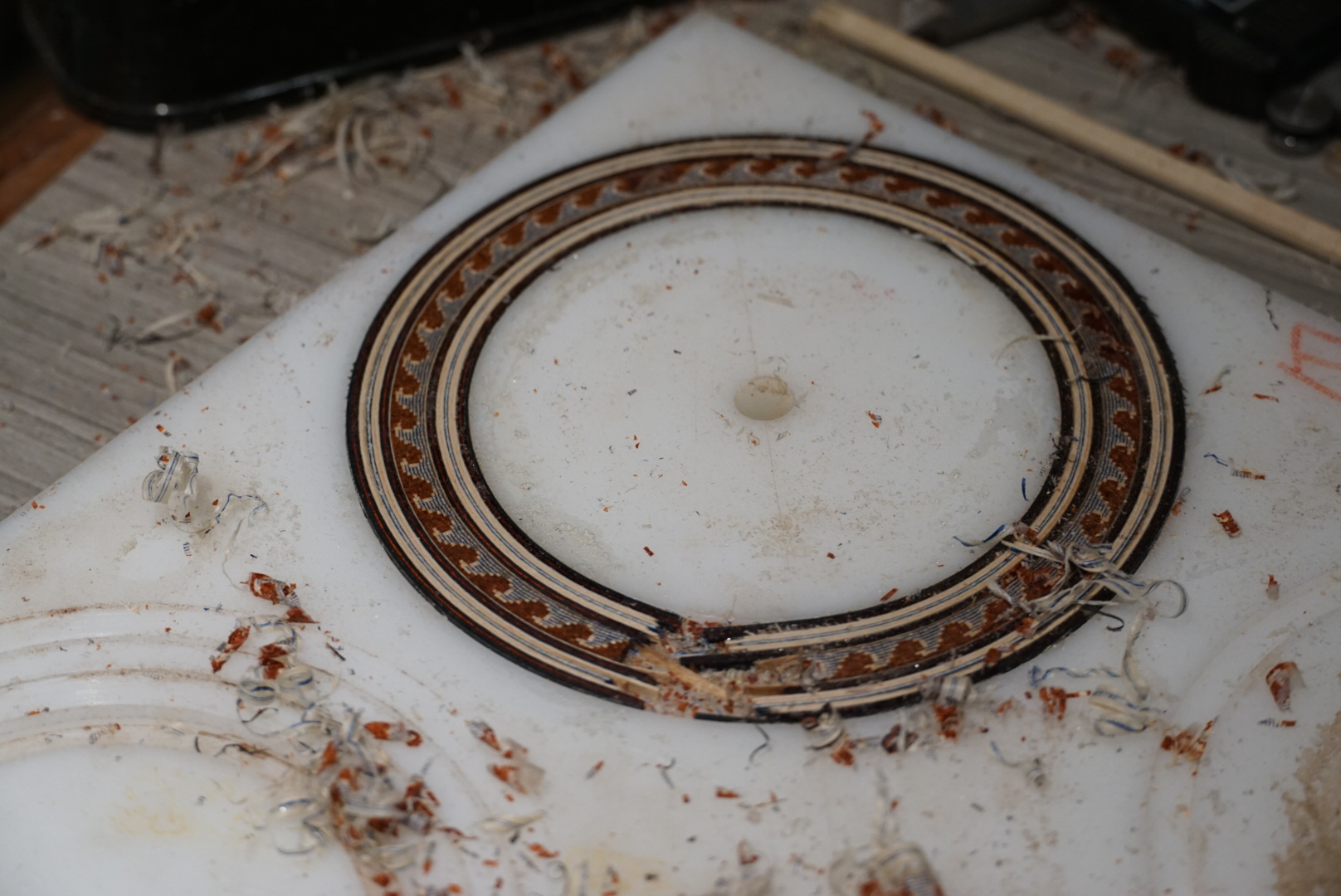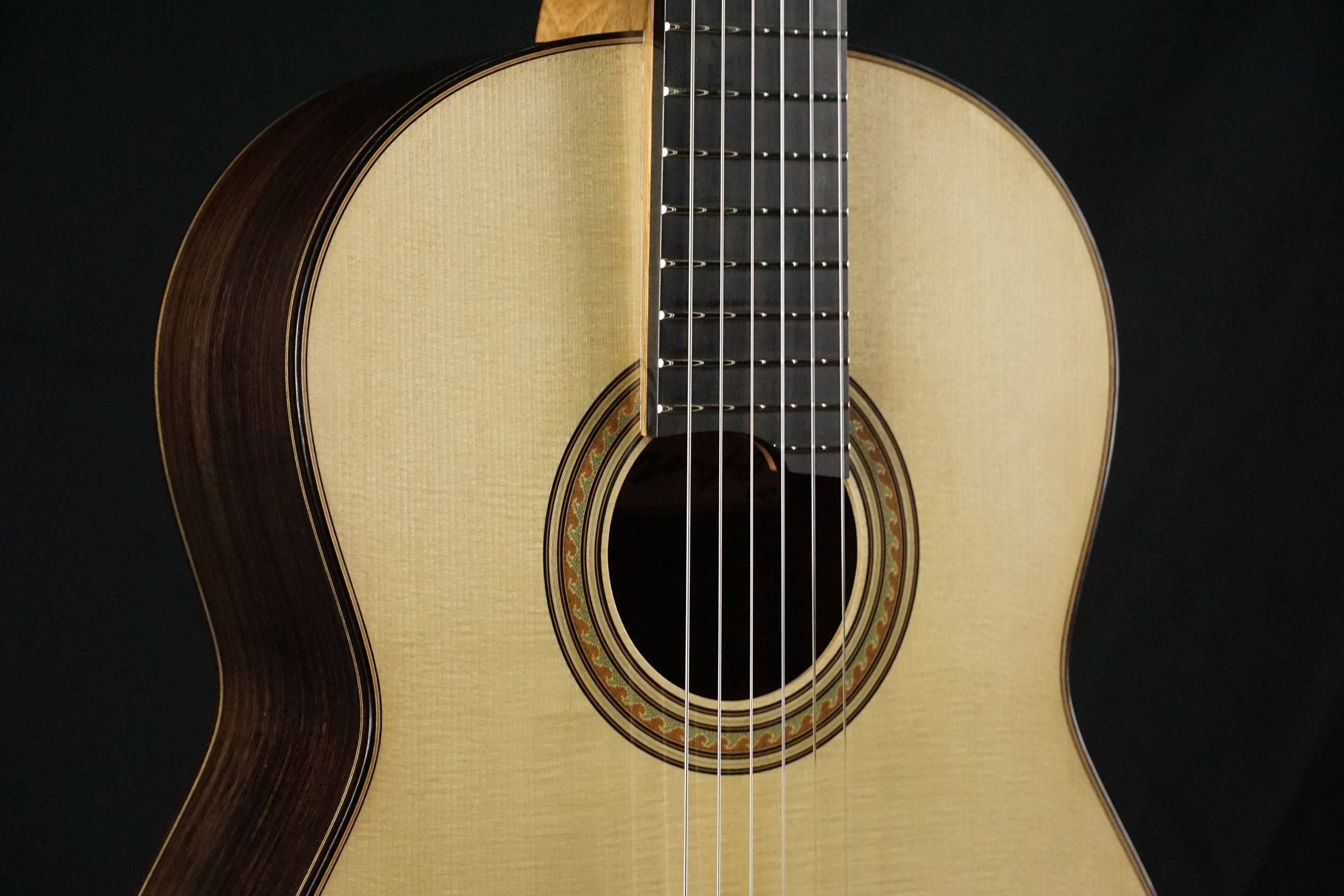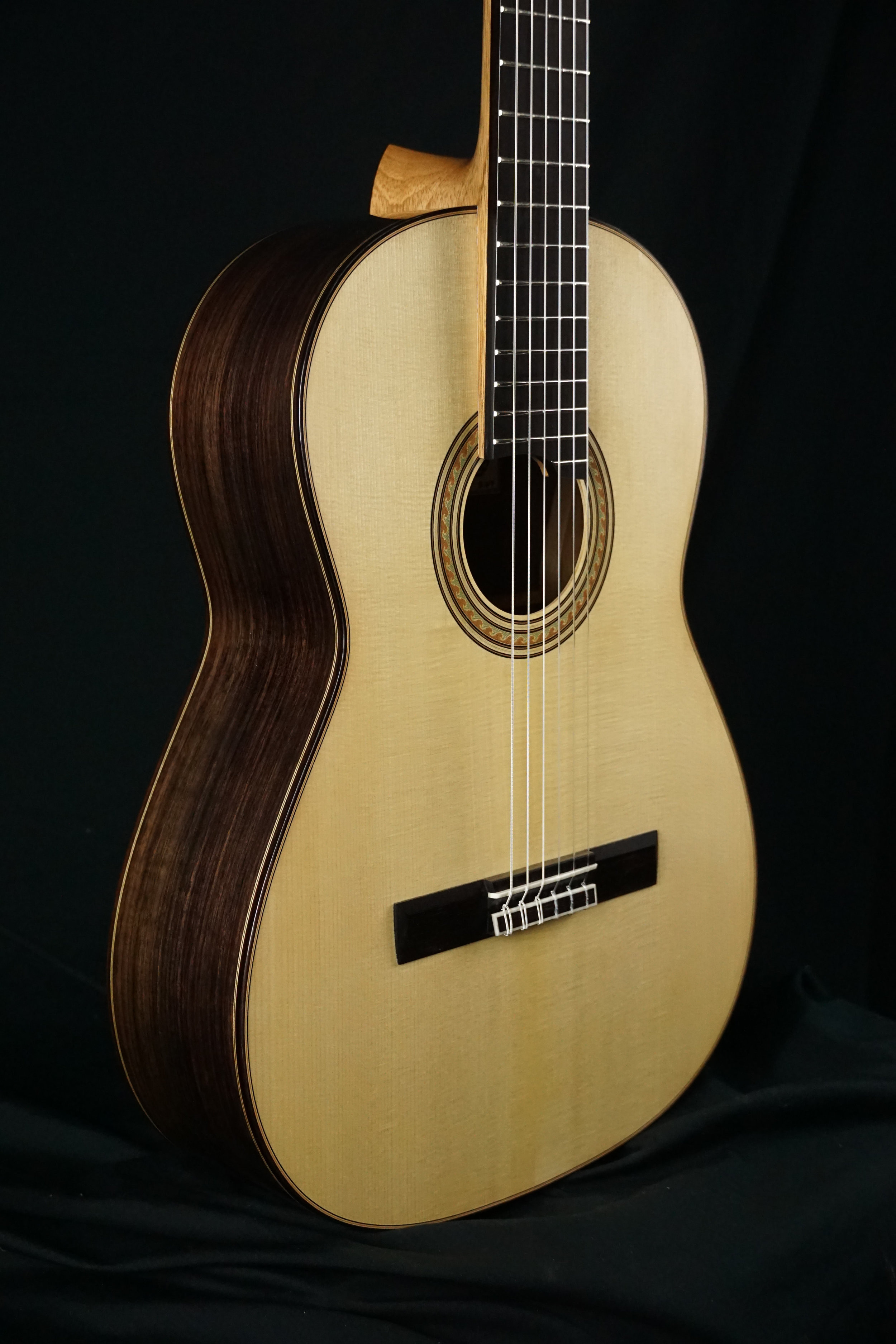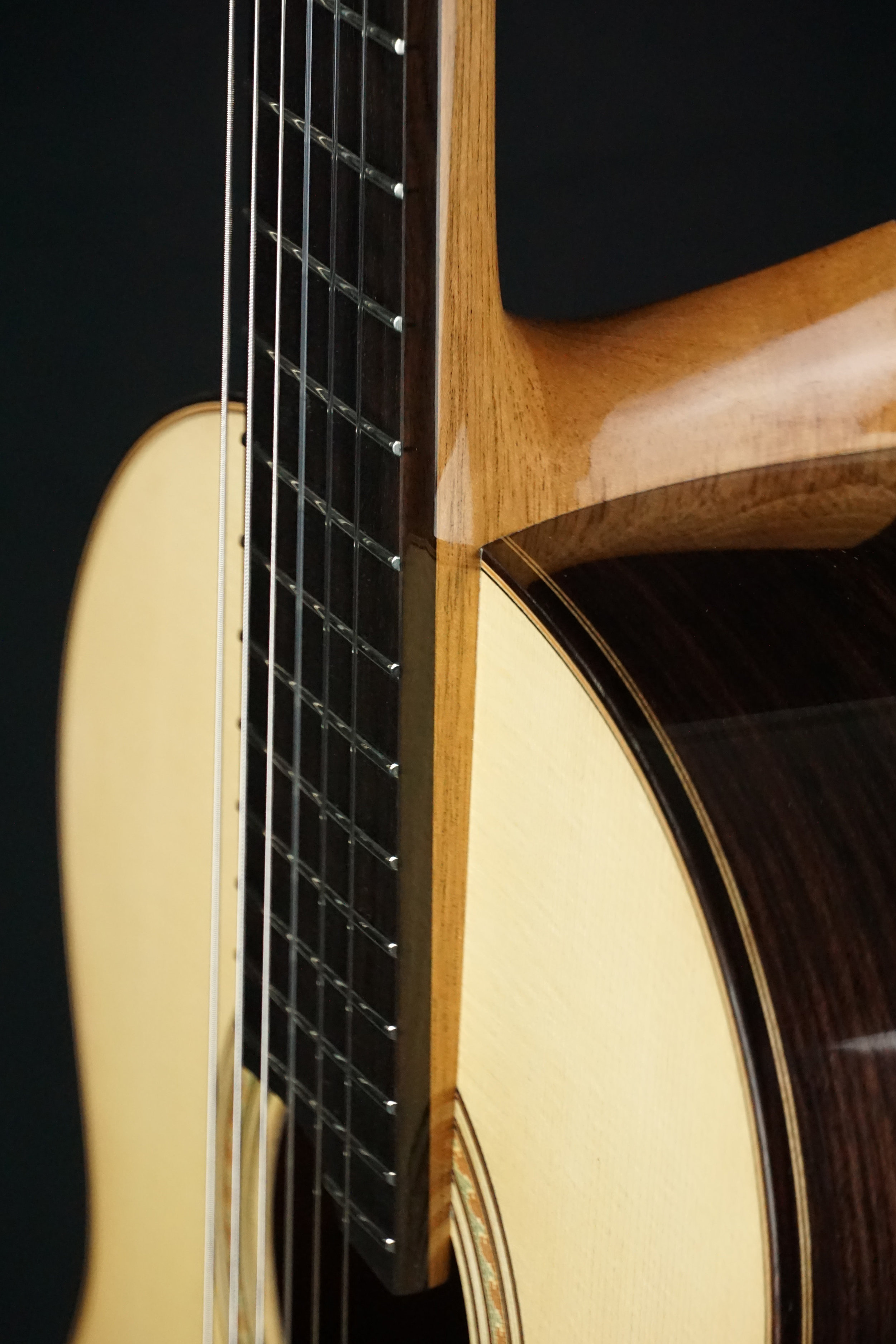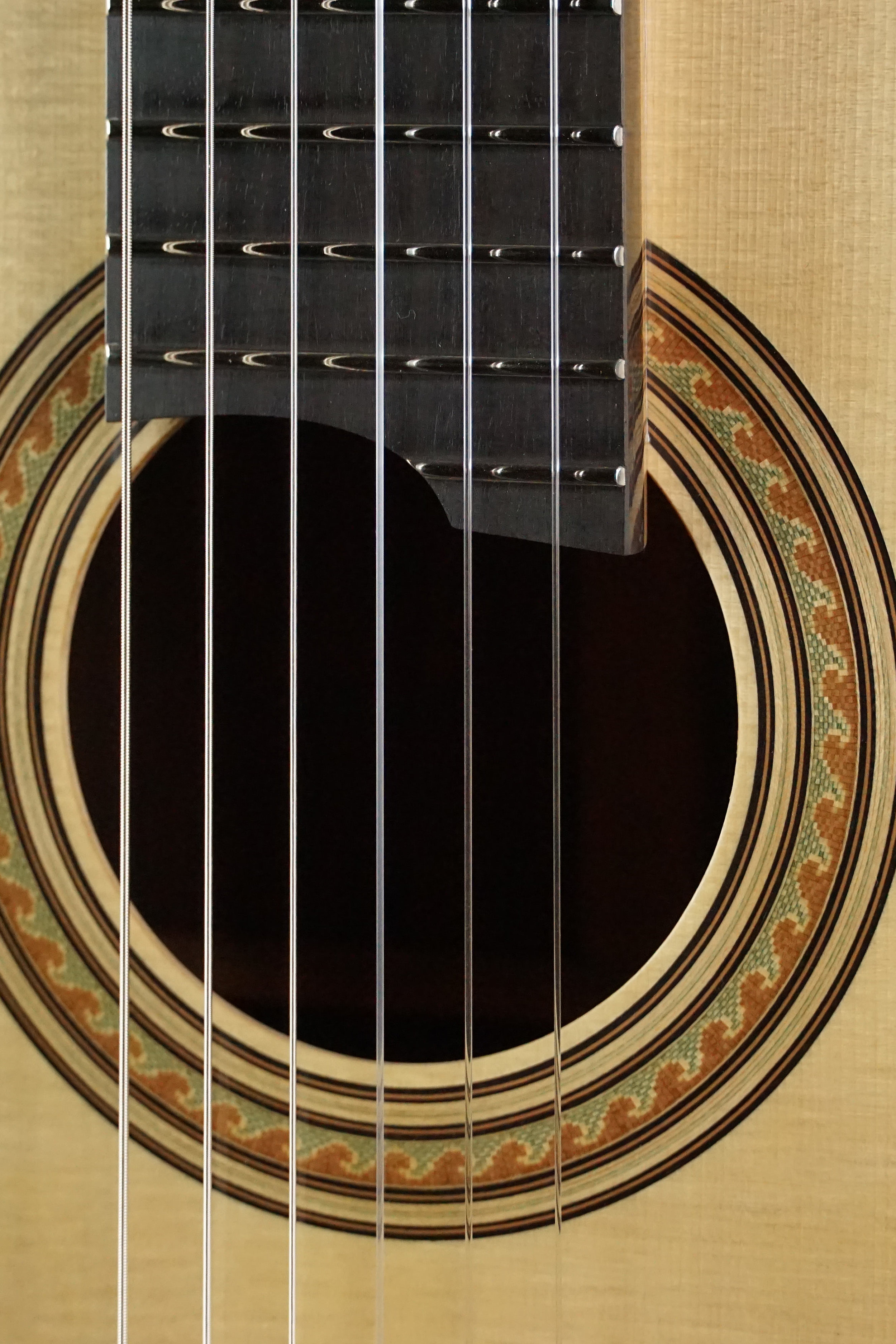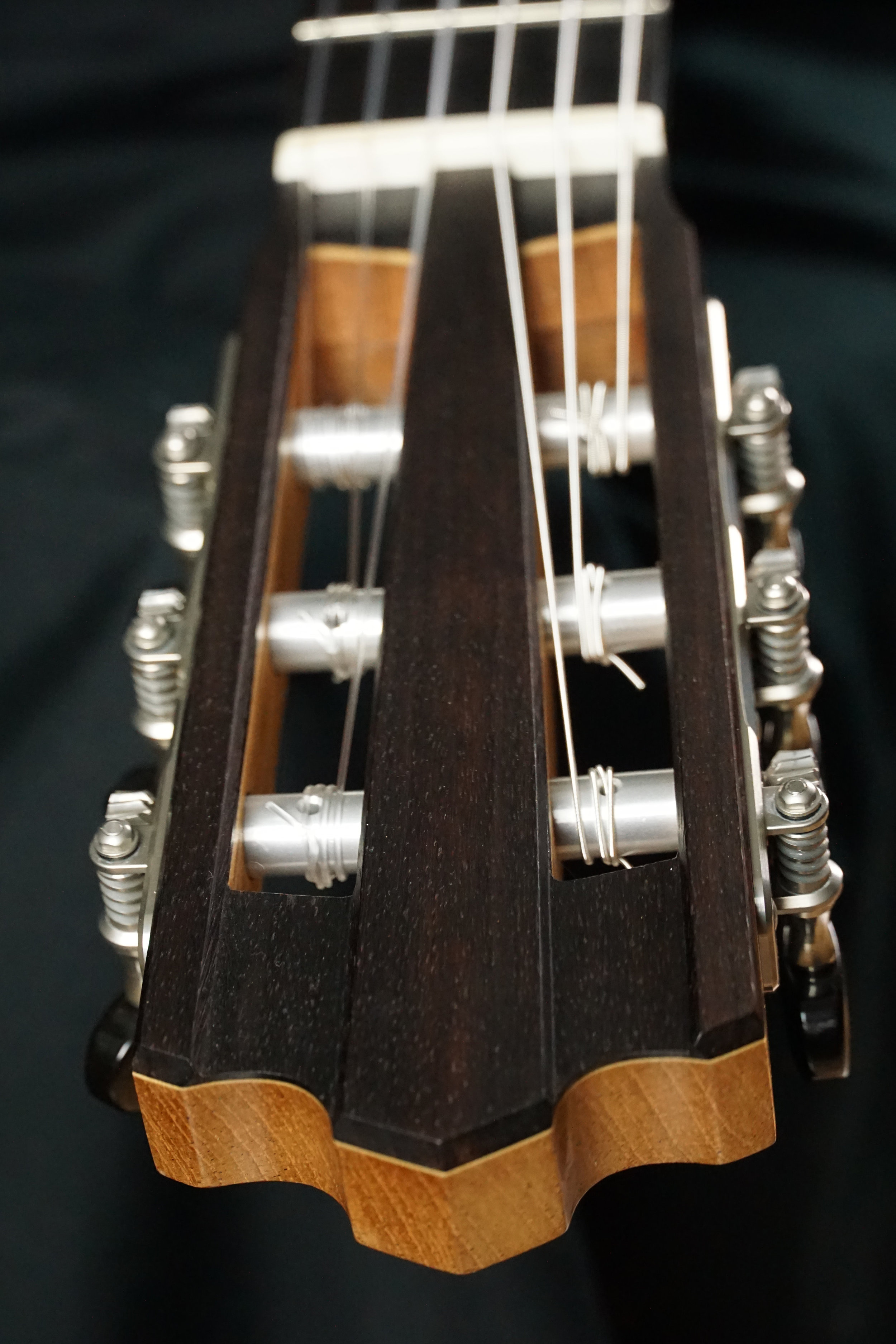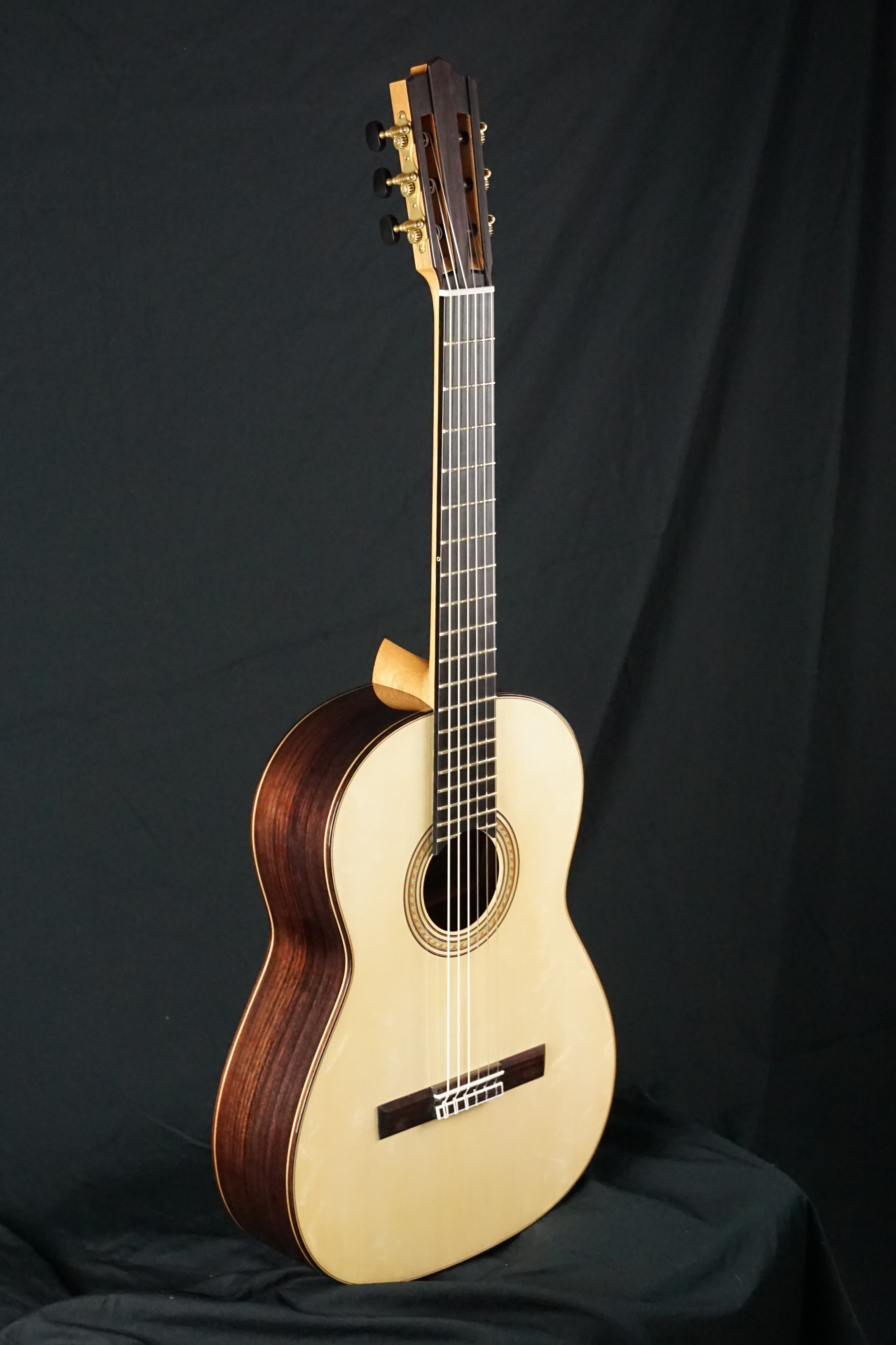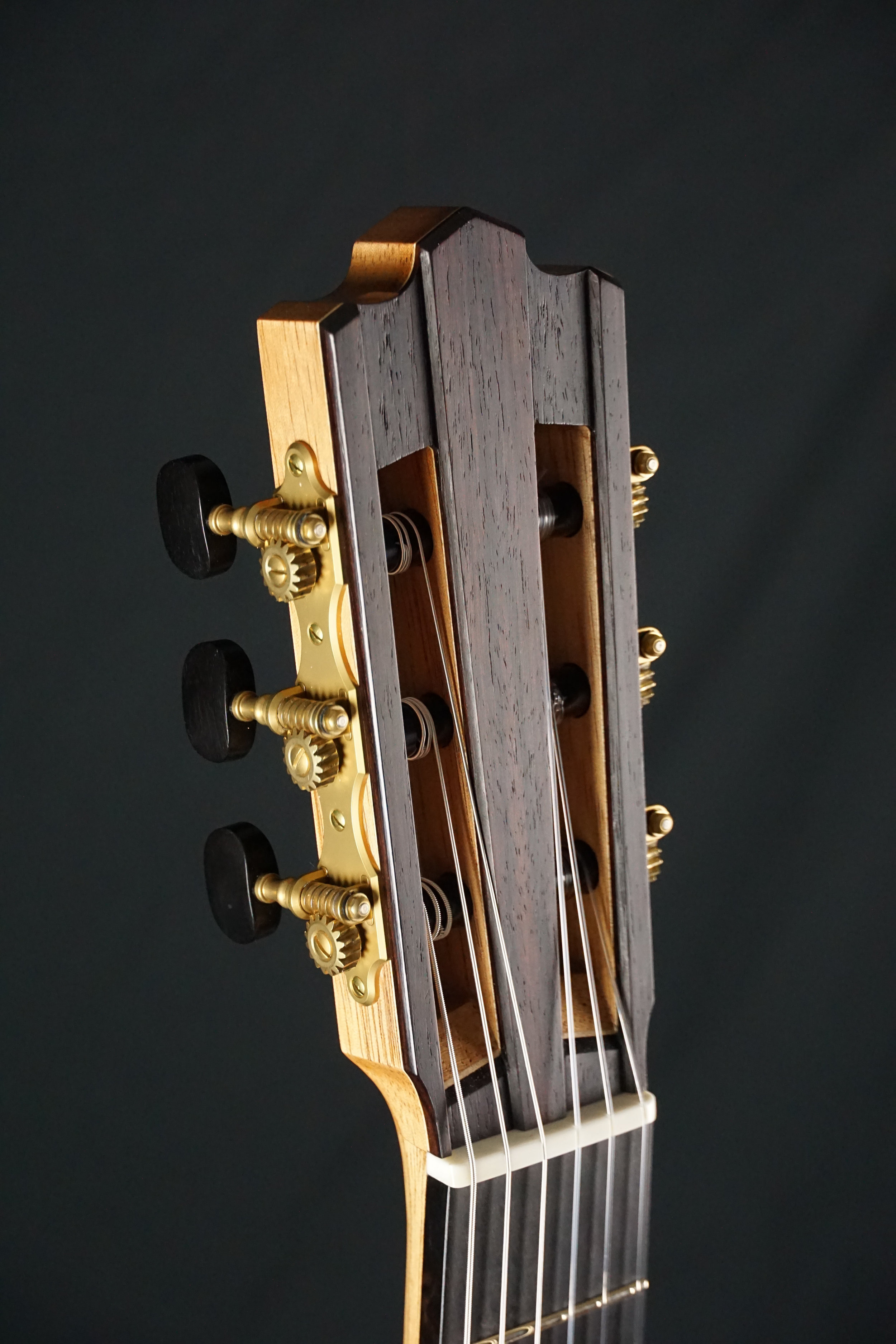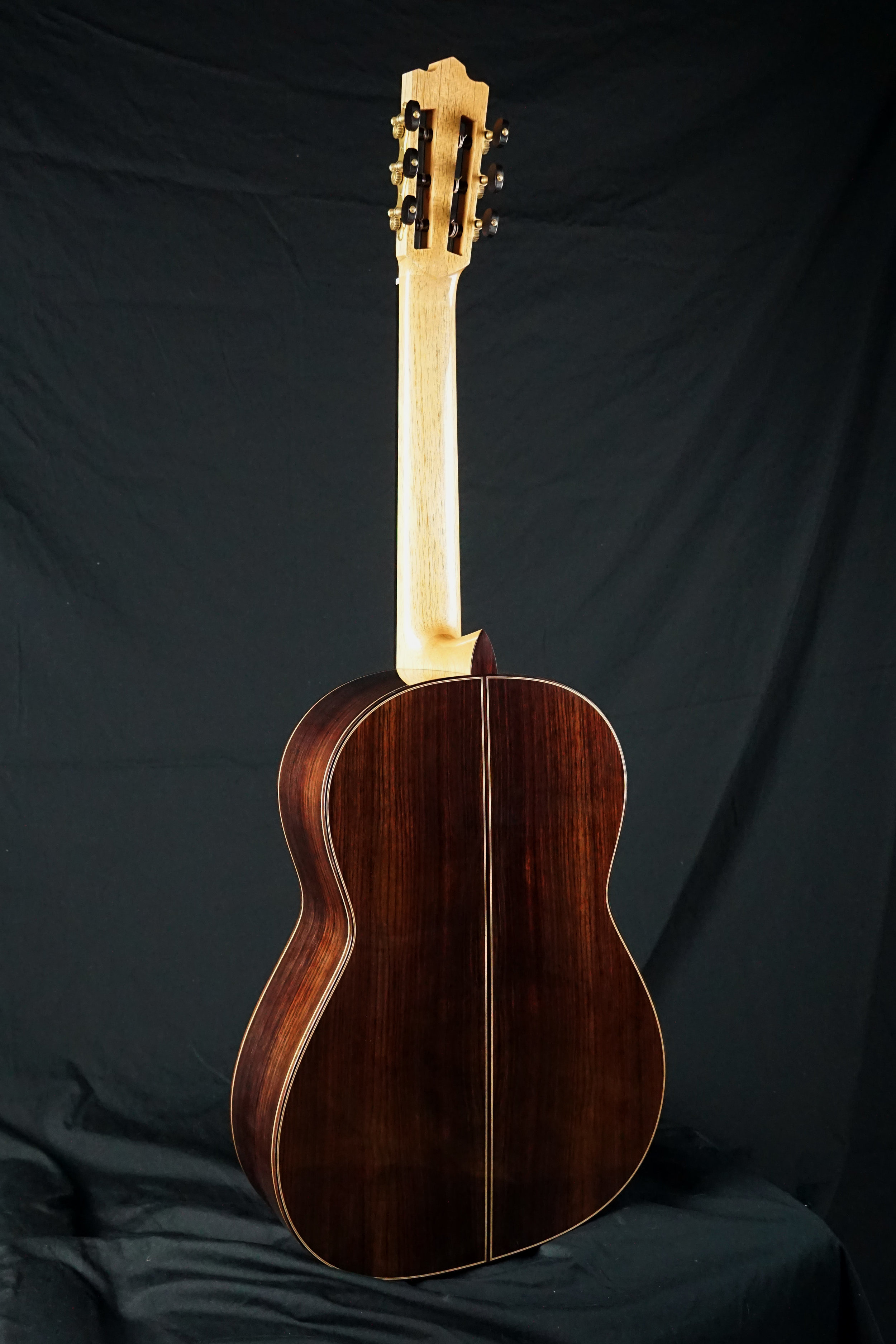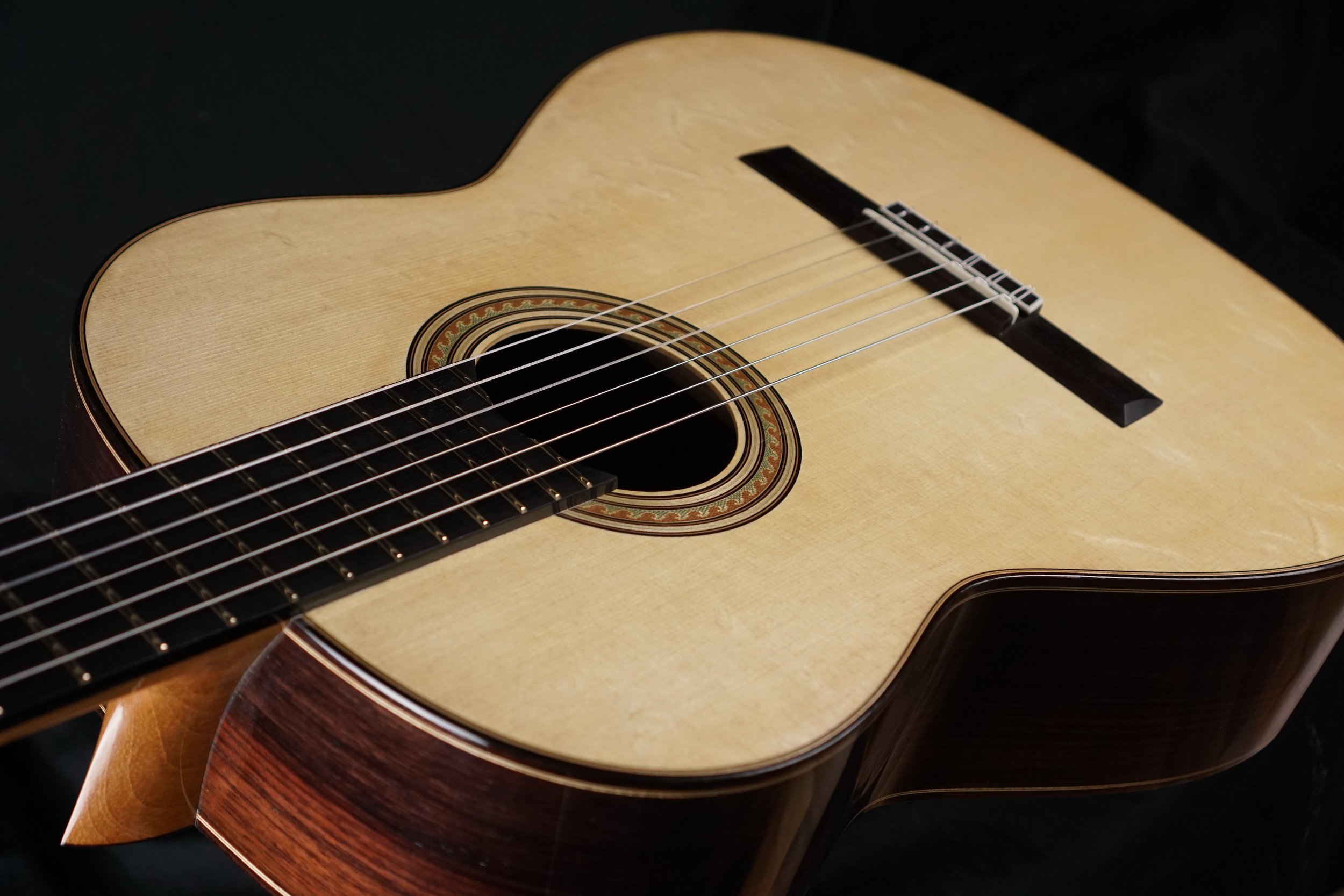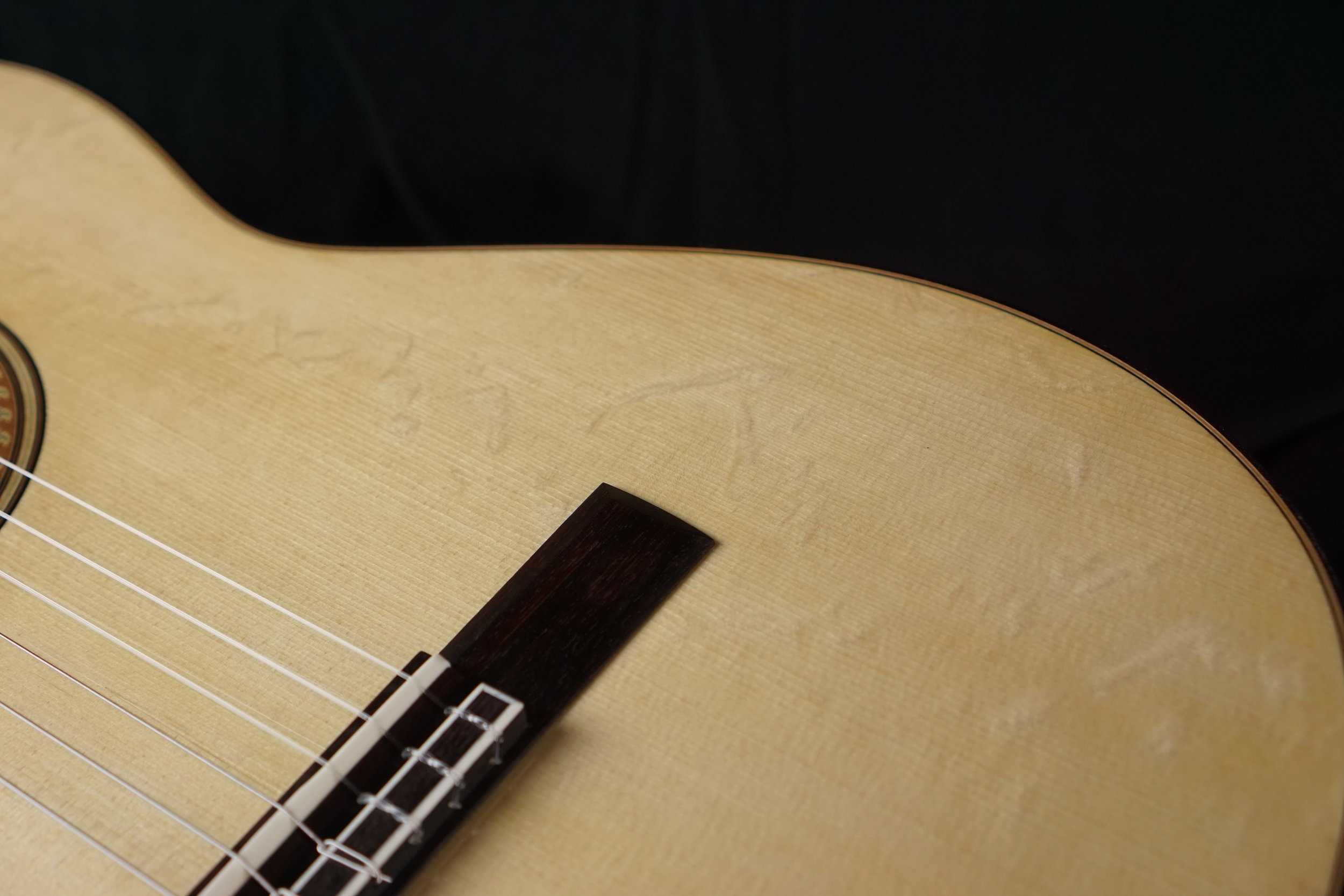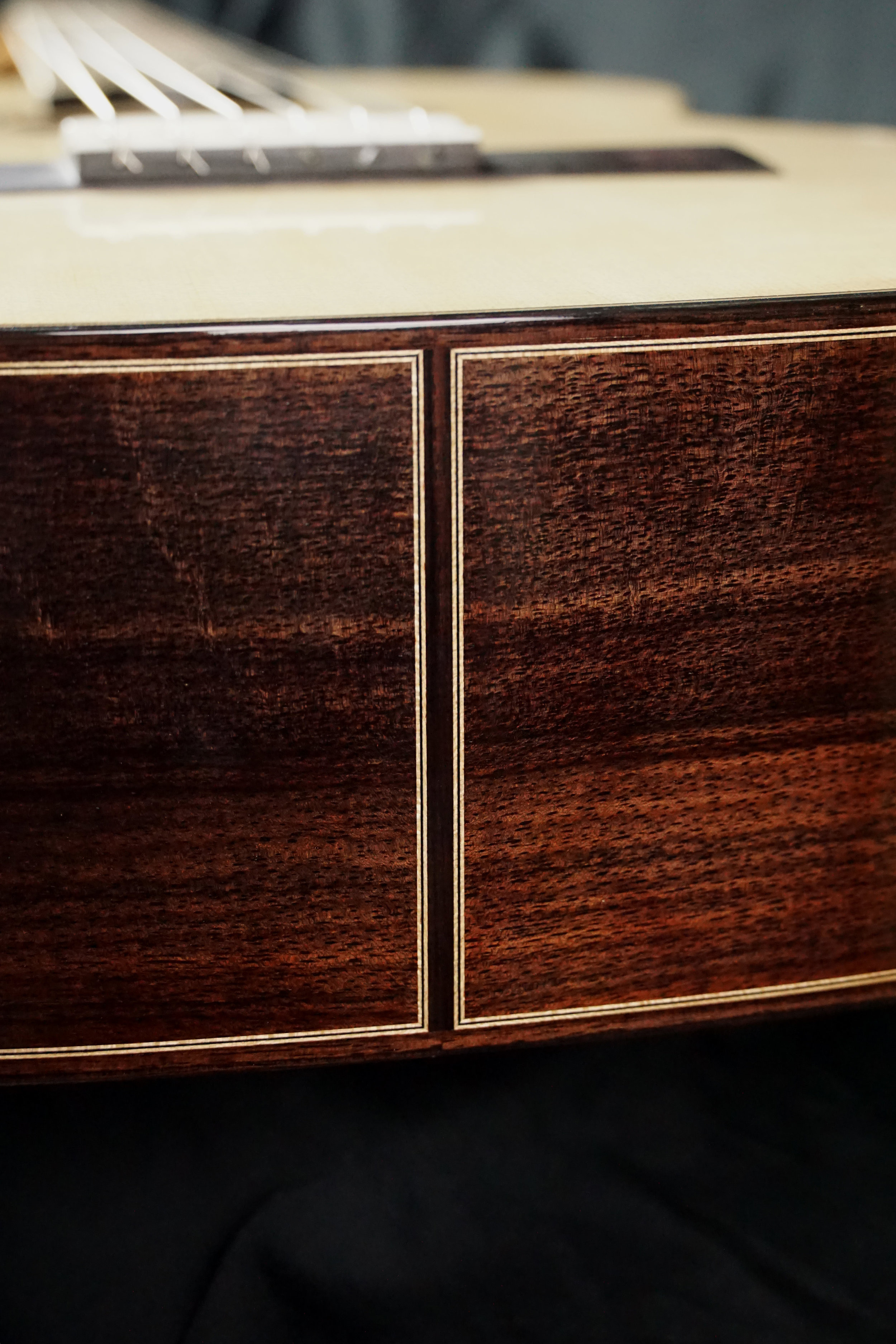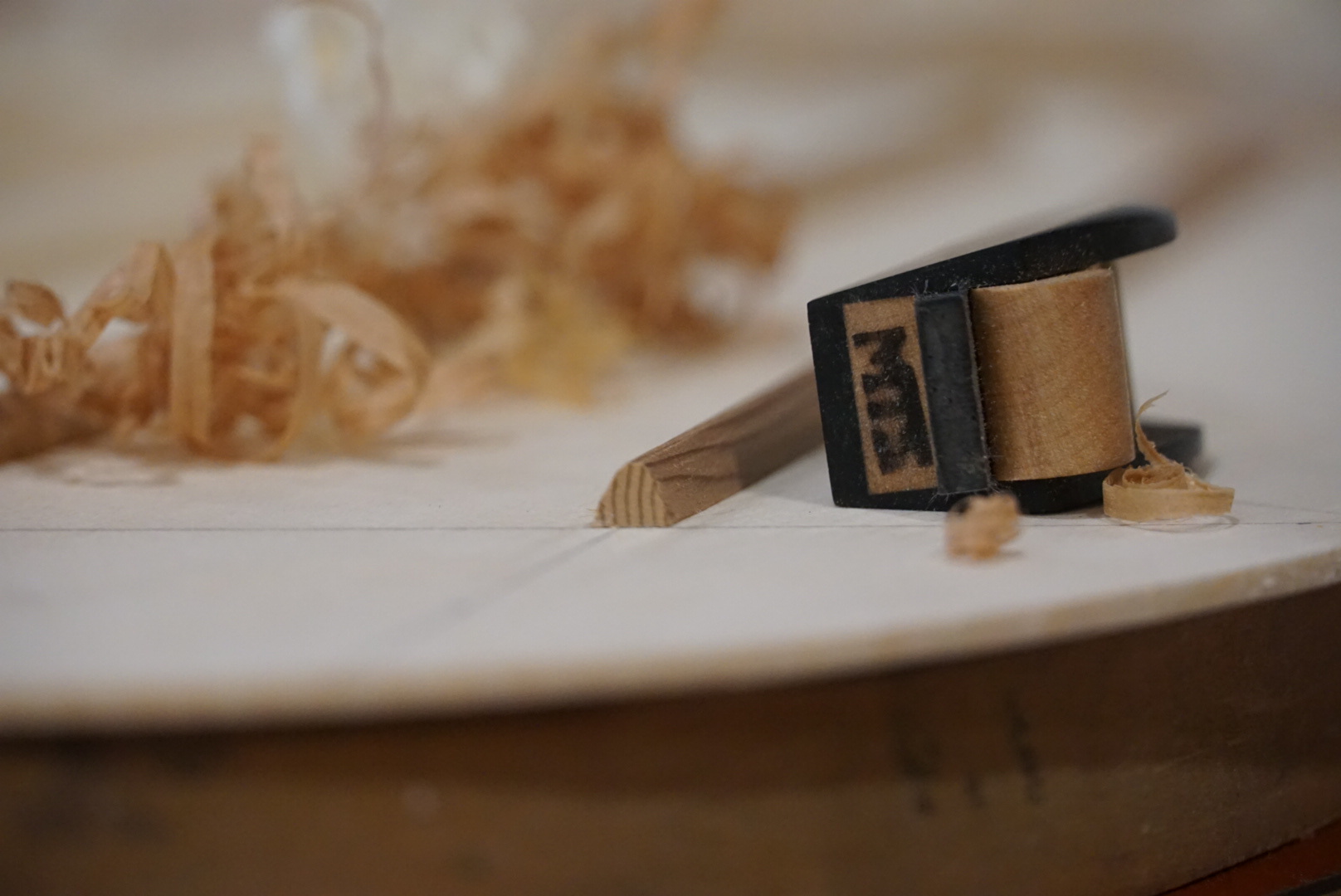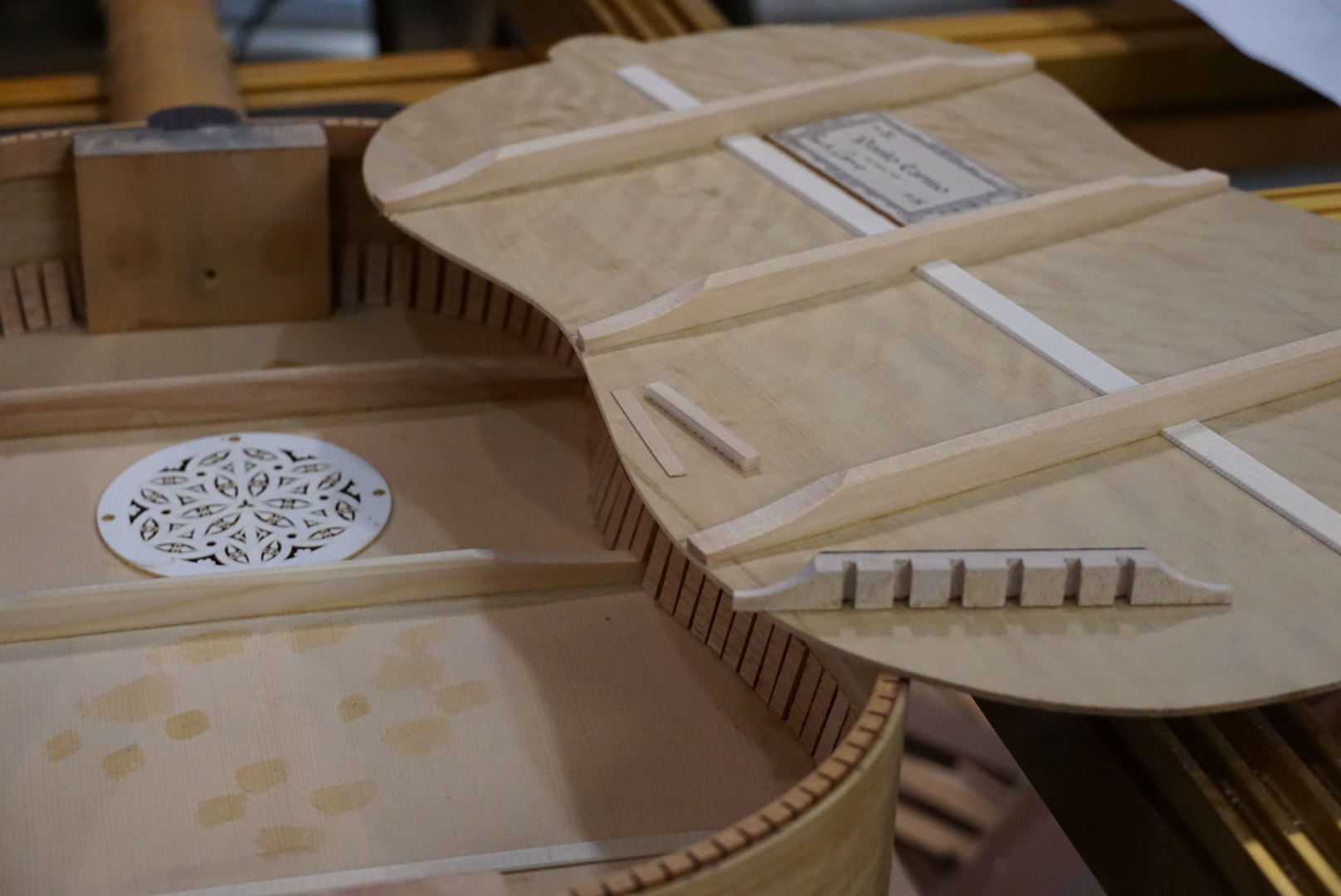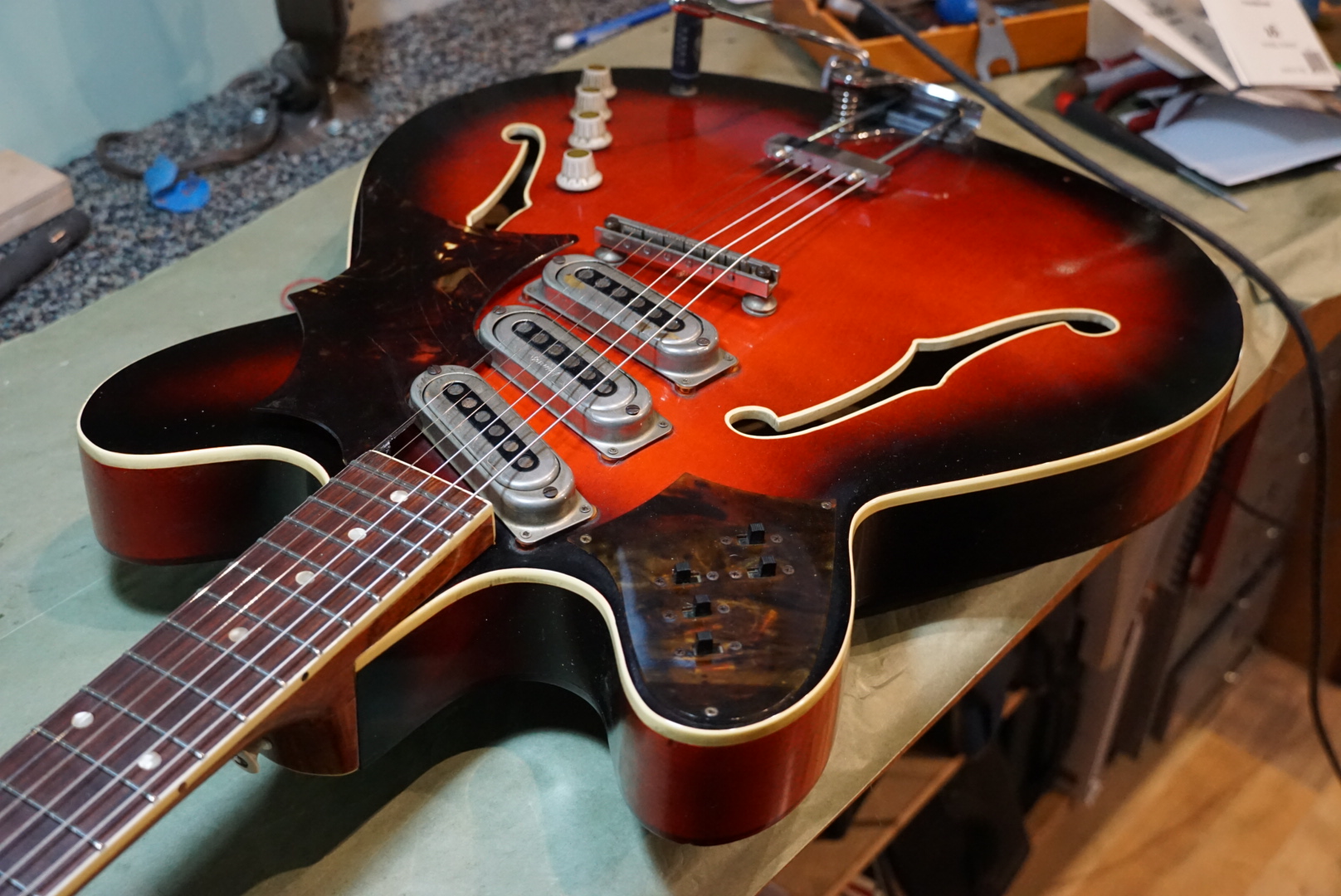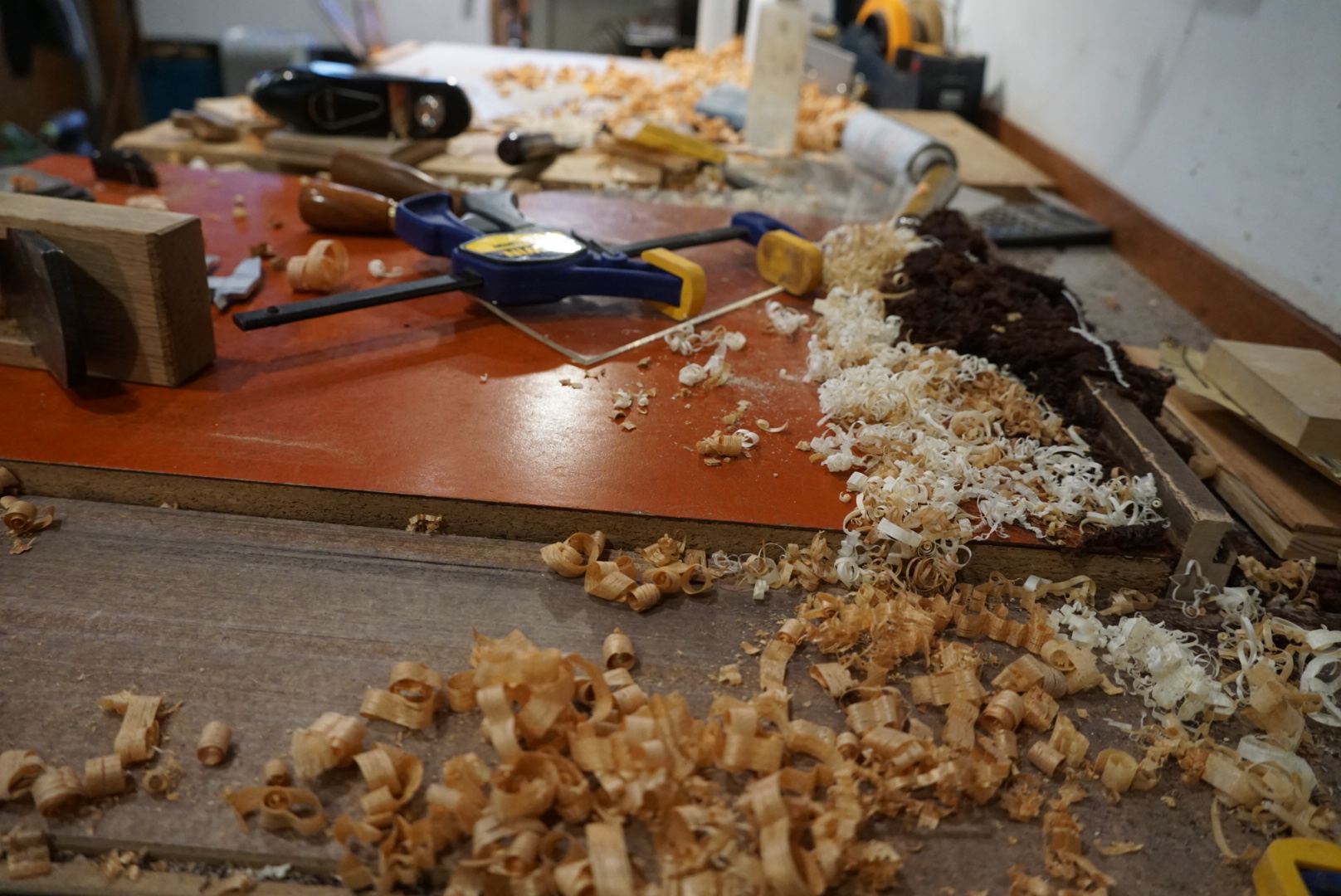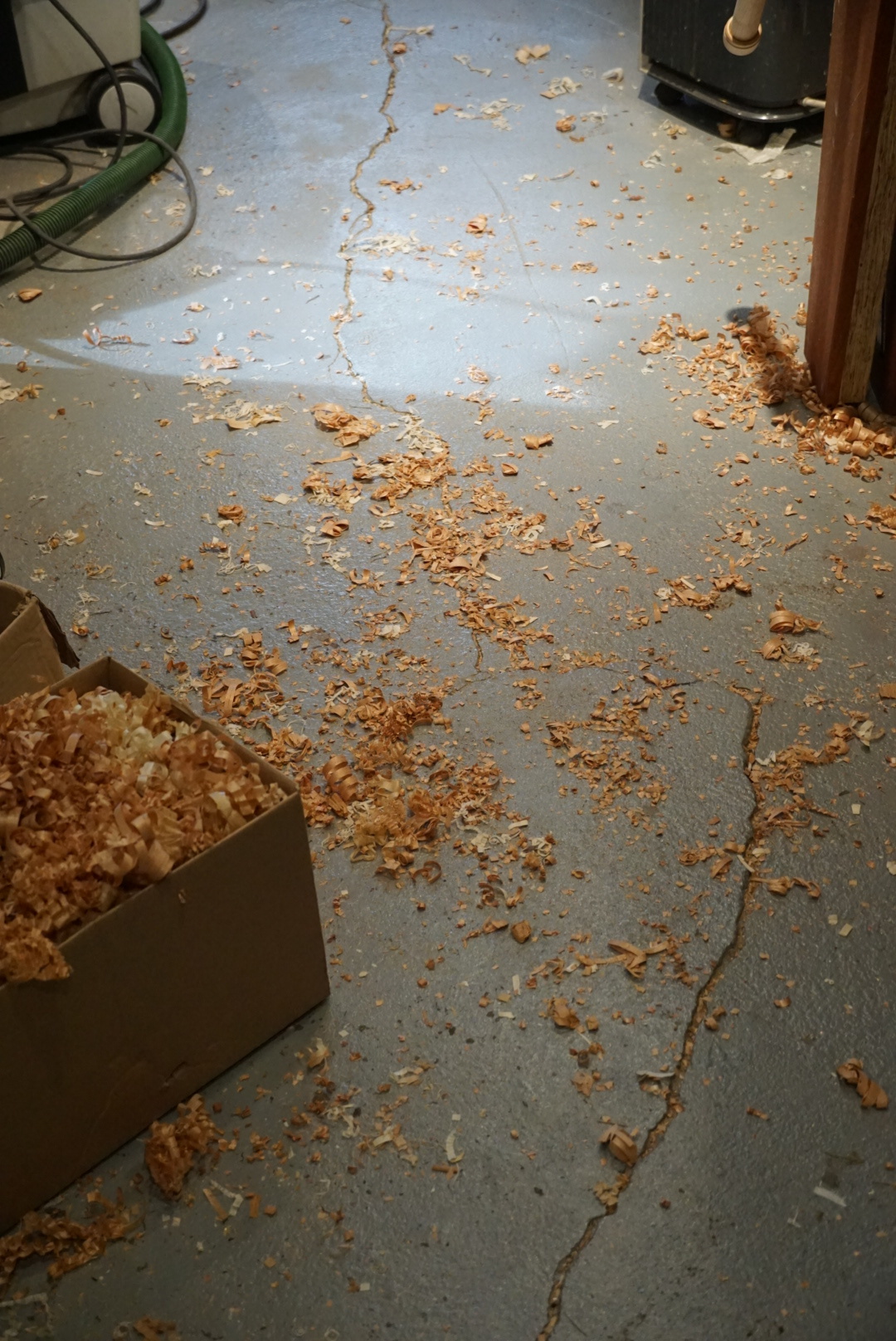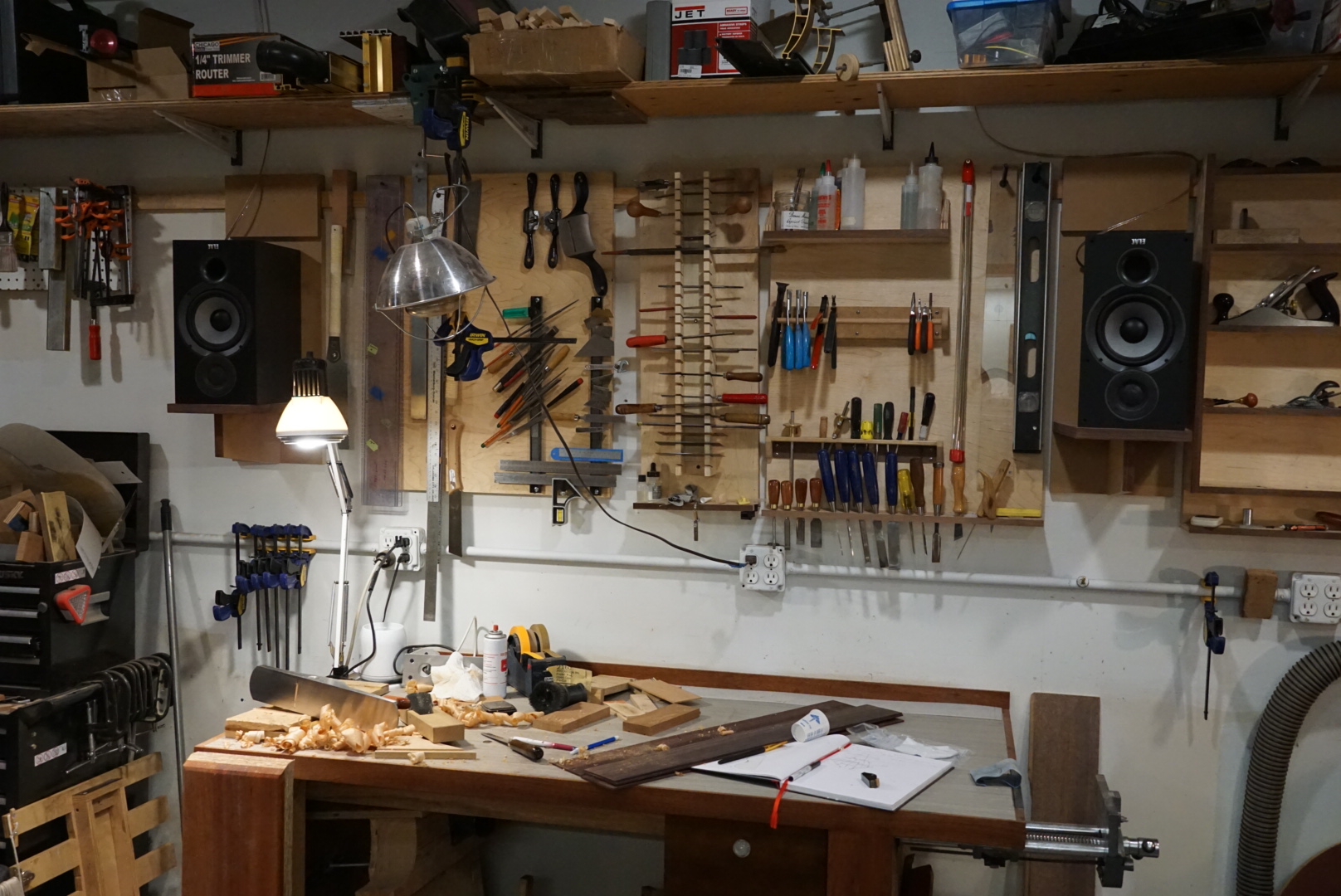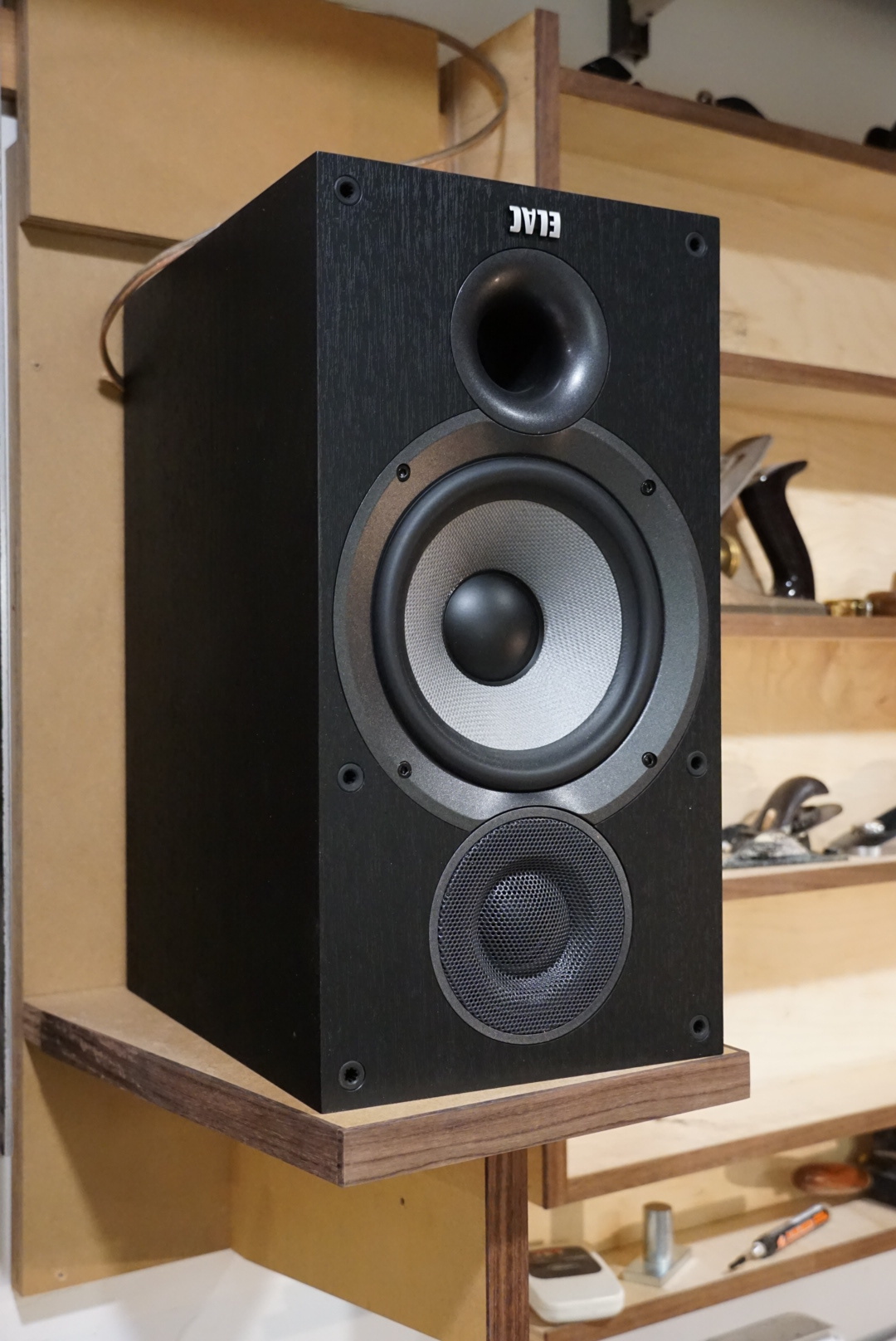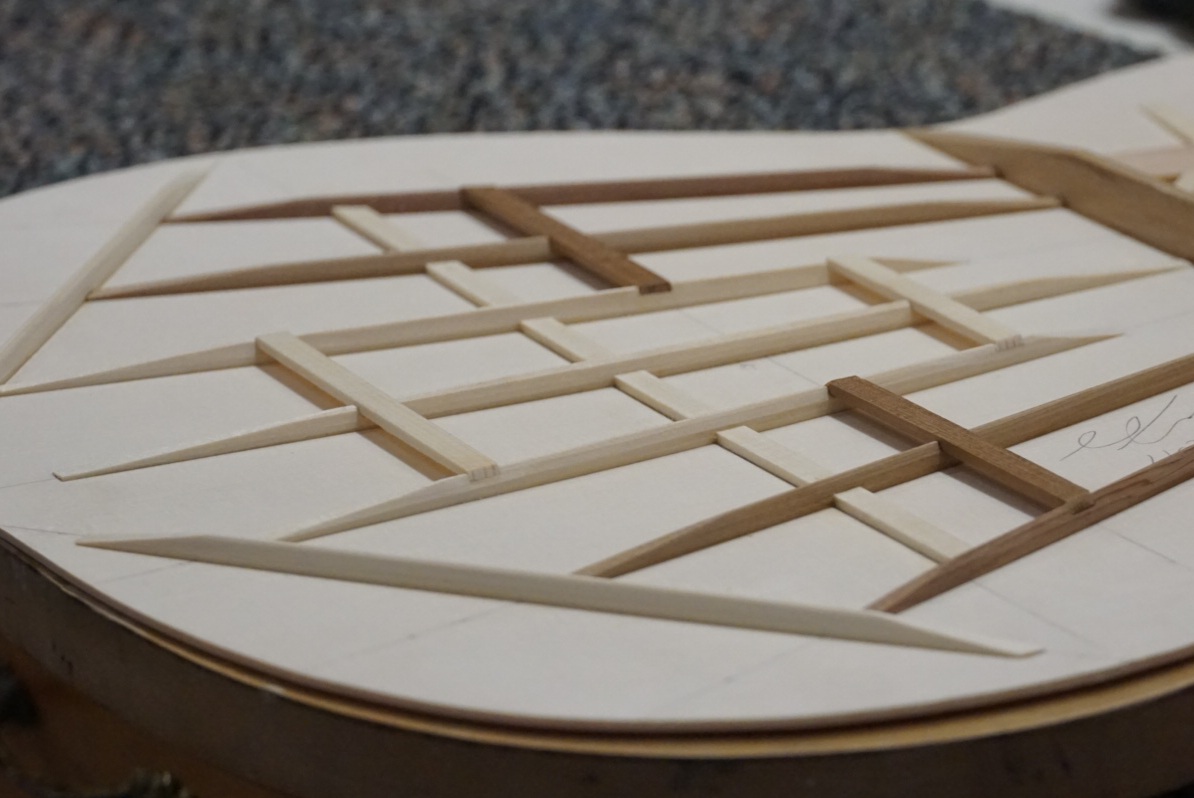Here are two non-classical guitar builds I recently completed. I got to make a new mold for a triple 0 size guitar and made my first eight-string ukulele. Both turned out great and I think were exactly what the clients were wanting.
This triple O size guitar is a great fingerstyle instrument. It was lightly built using a fairly scalloped X bracing, giving it a traditional voice, rich with lots of overtones and color and meant to be strung up with lighter gauged strings. EVO Gold frets and matching gold hardware go with the simple or “spartan” style binding scheme. The flamed maple gets to be the star. It is a short scale but the fret board dimensions and string spacing are custom to fit the client’s playing style. A K&K Pure Pickup was also a good fit. I really love the way this guitar turned out. It’s a simple but, I hope, well executed guitar that is a real player.
The eight string ukulele was also a really fun project. It makes a really full sound; like two ukuleles playing at once. It is a full sound that is really great for voice accompaniment. I really loved the showcase of North American materials. The Walnut was highly figured and the hand cut inlays add so much to the overall look. We had decided on using this specific set of tuning machines with vintage looking bronze plates and then decided to carry that motif into the inlays that went into the fingerboard, headstock, and the back of the neck. It is a fairly traditional shape and we carried that motif throughout. The walnut really shines.


